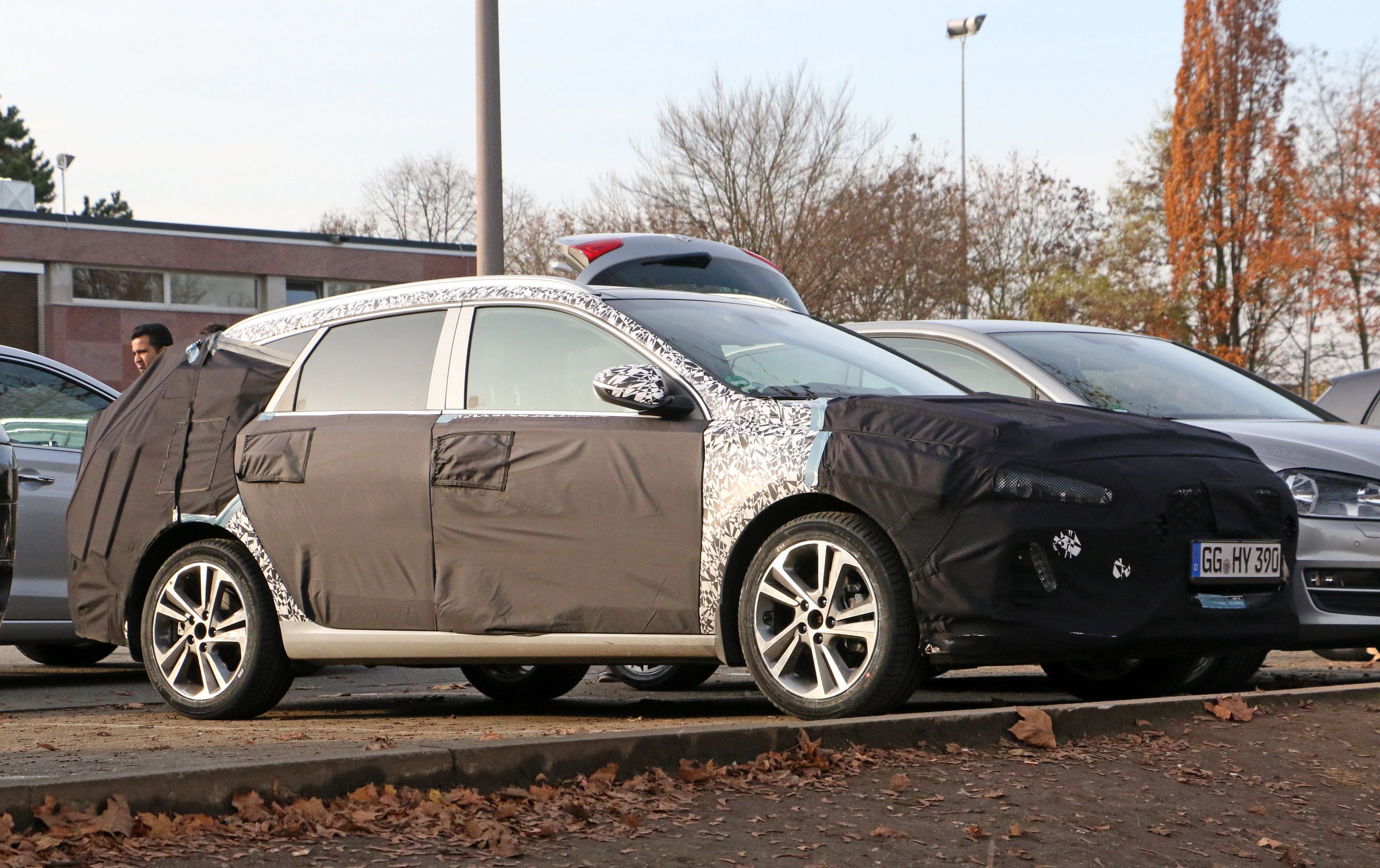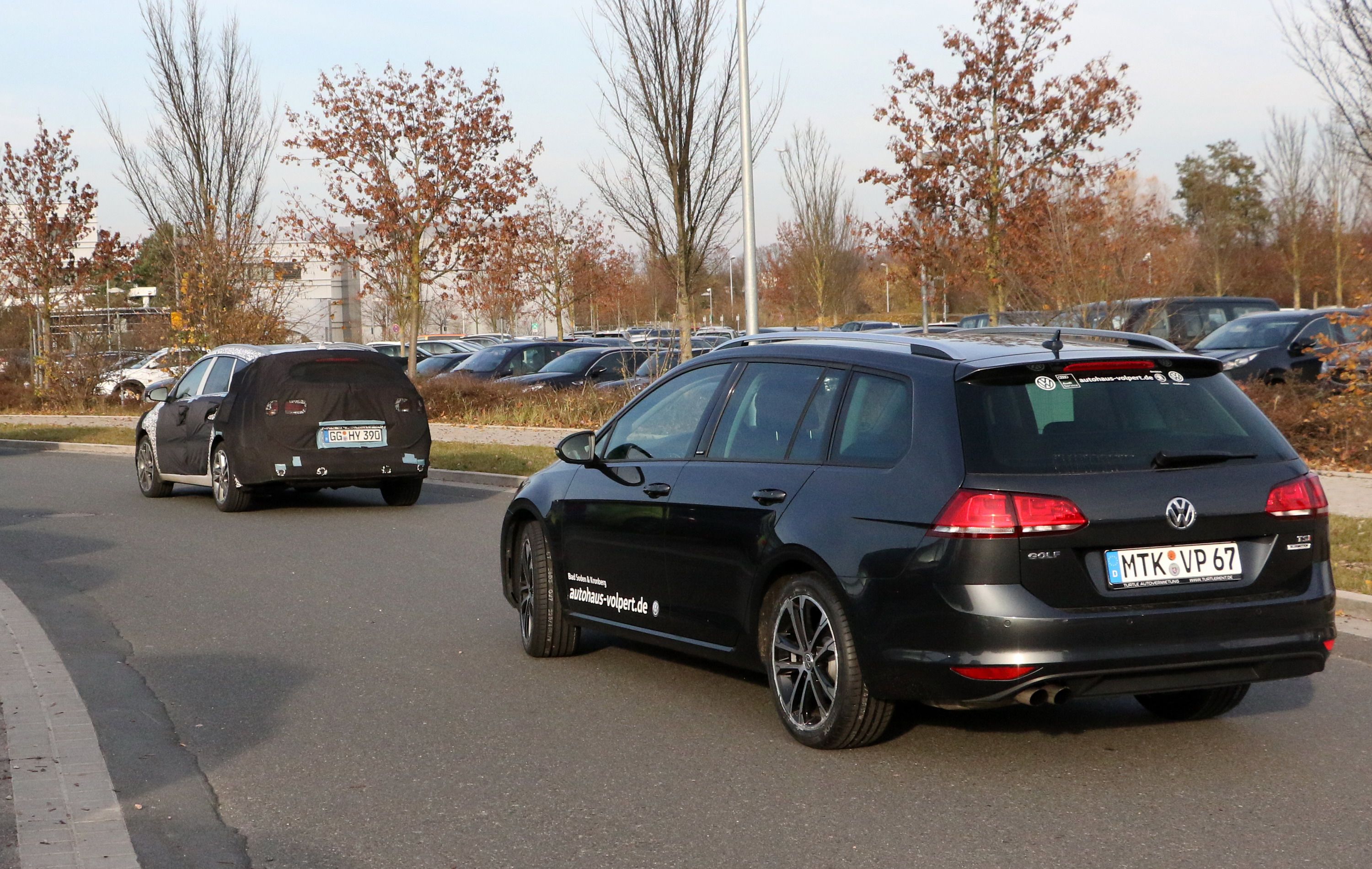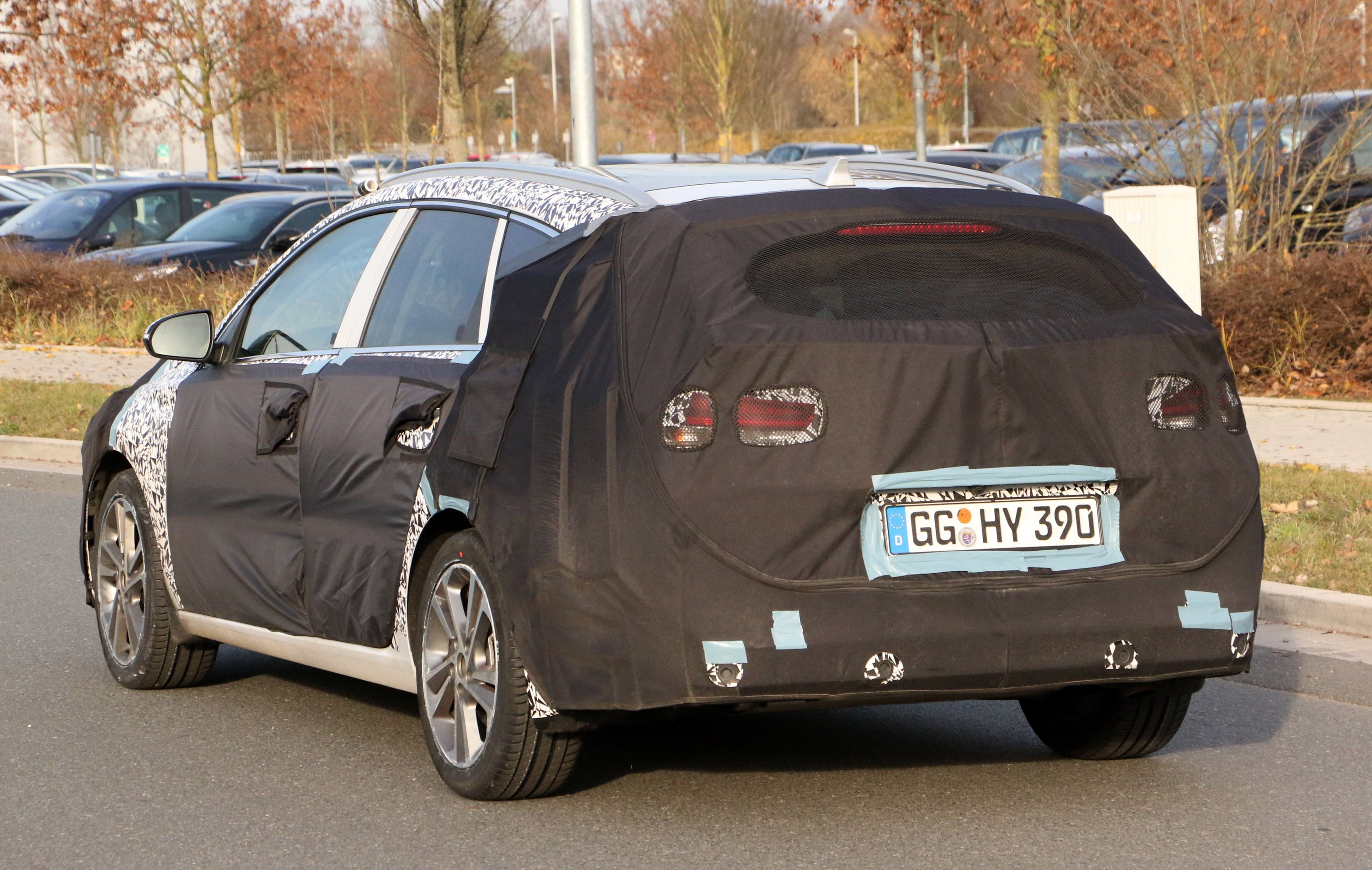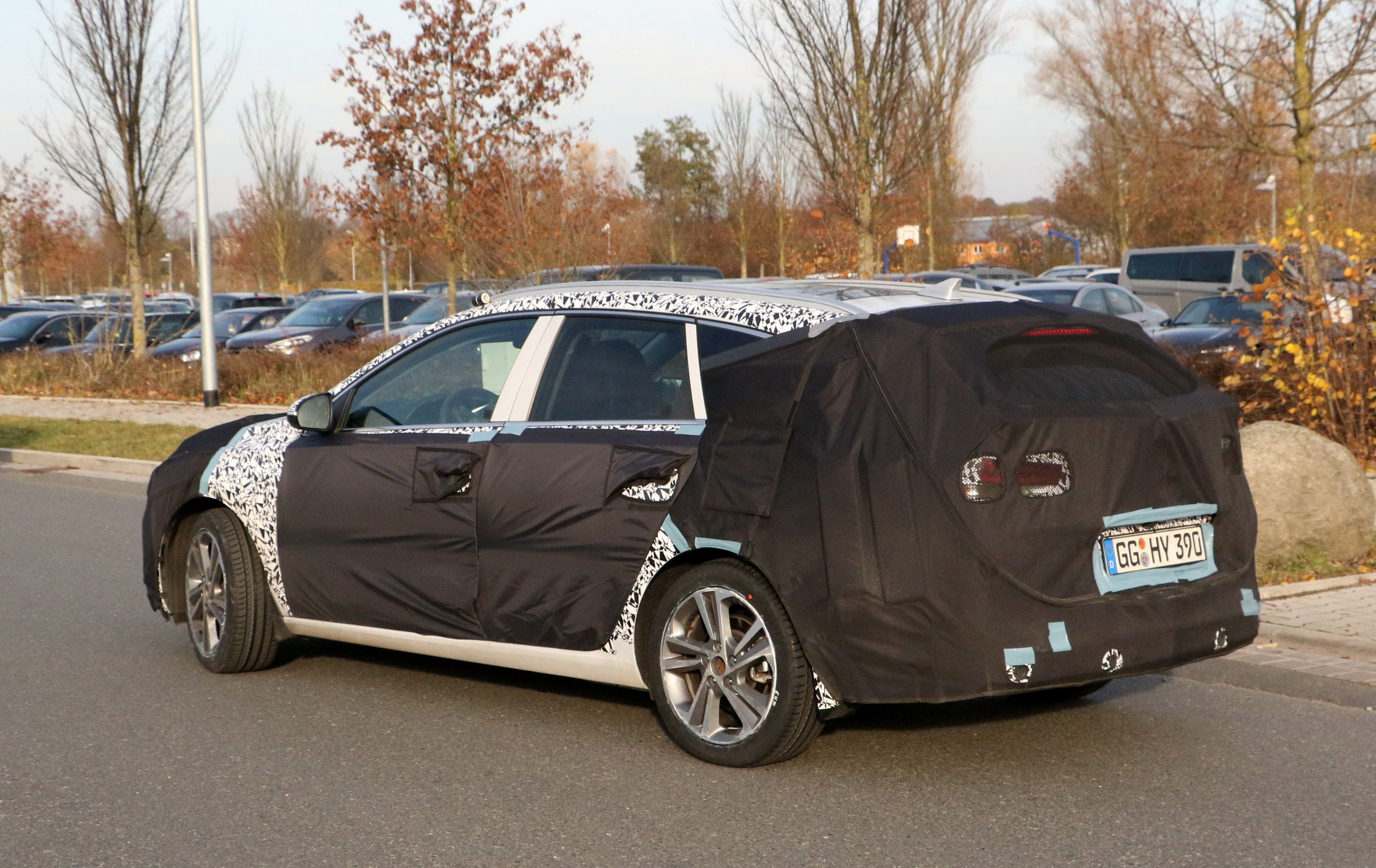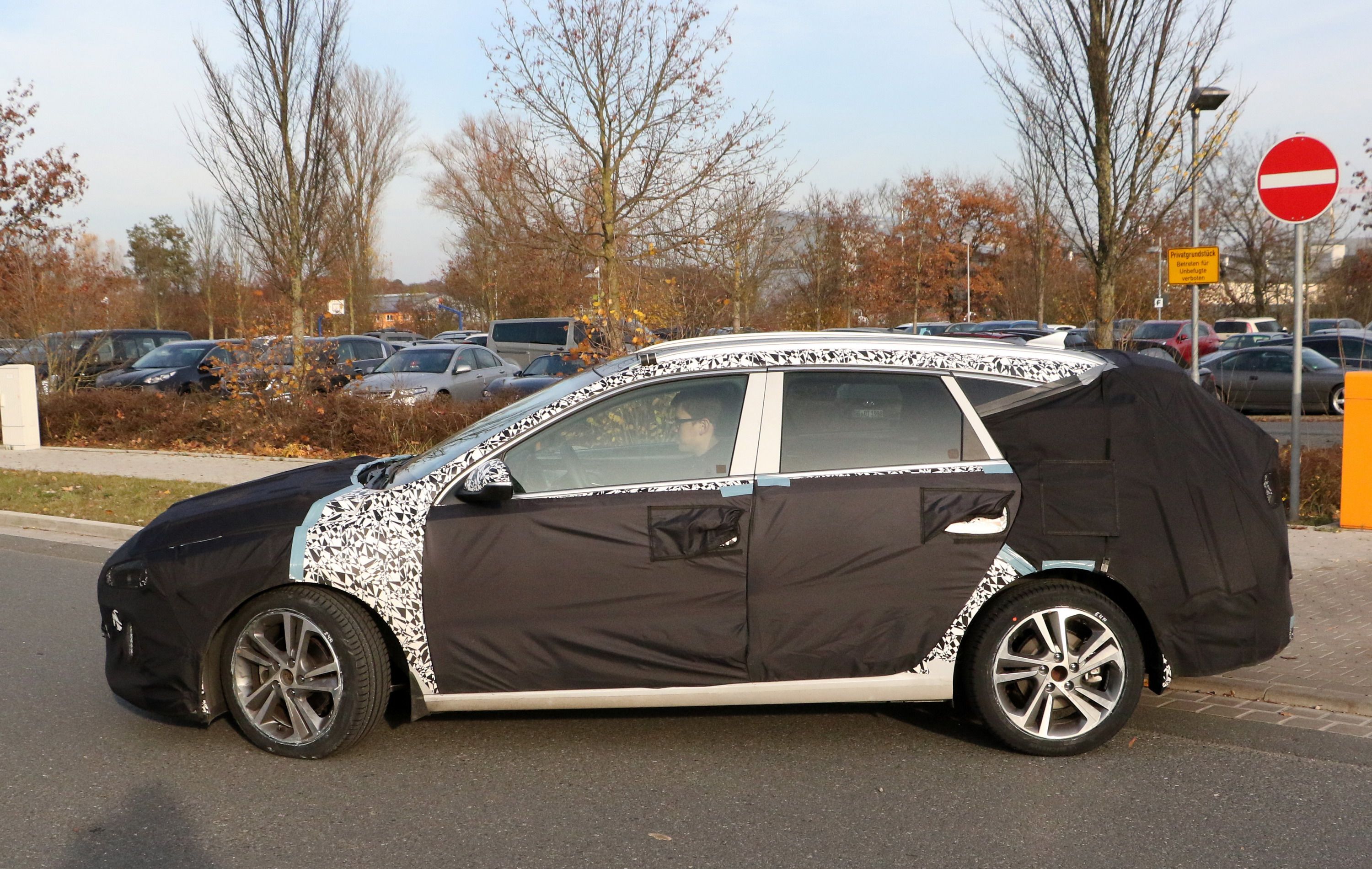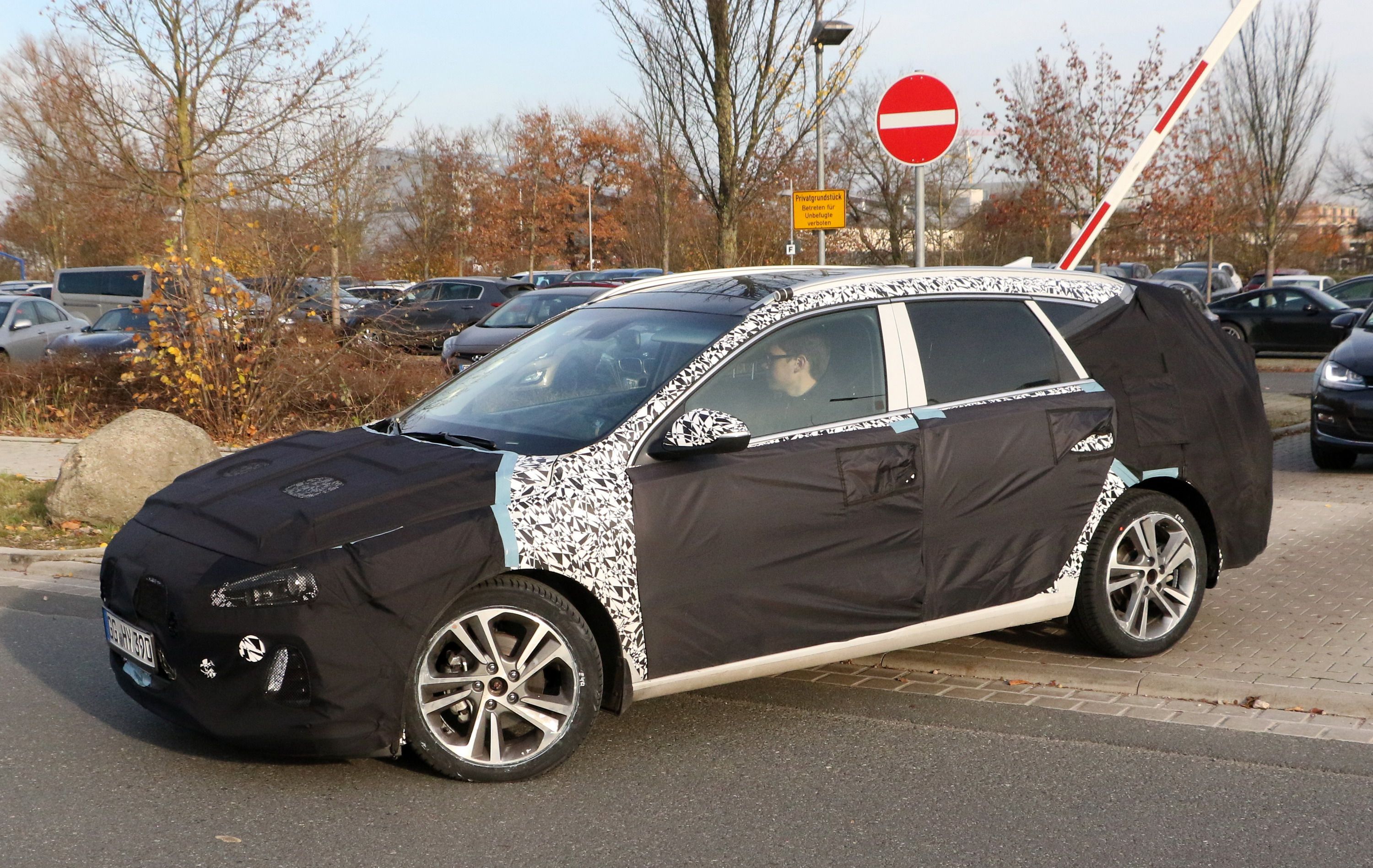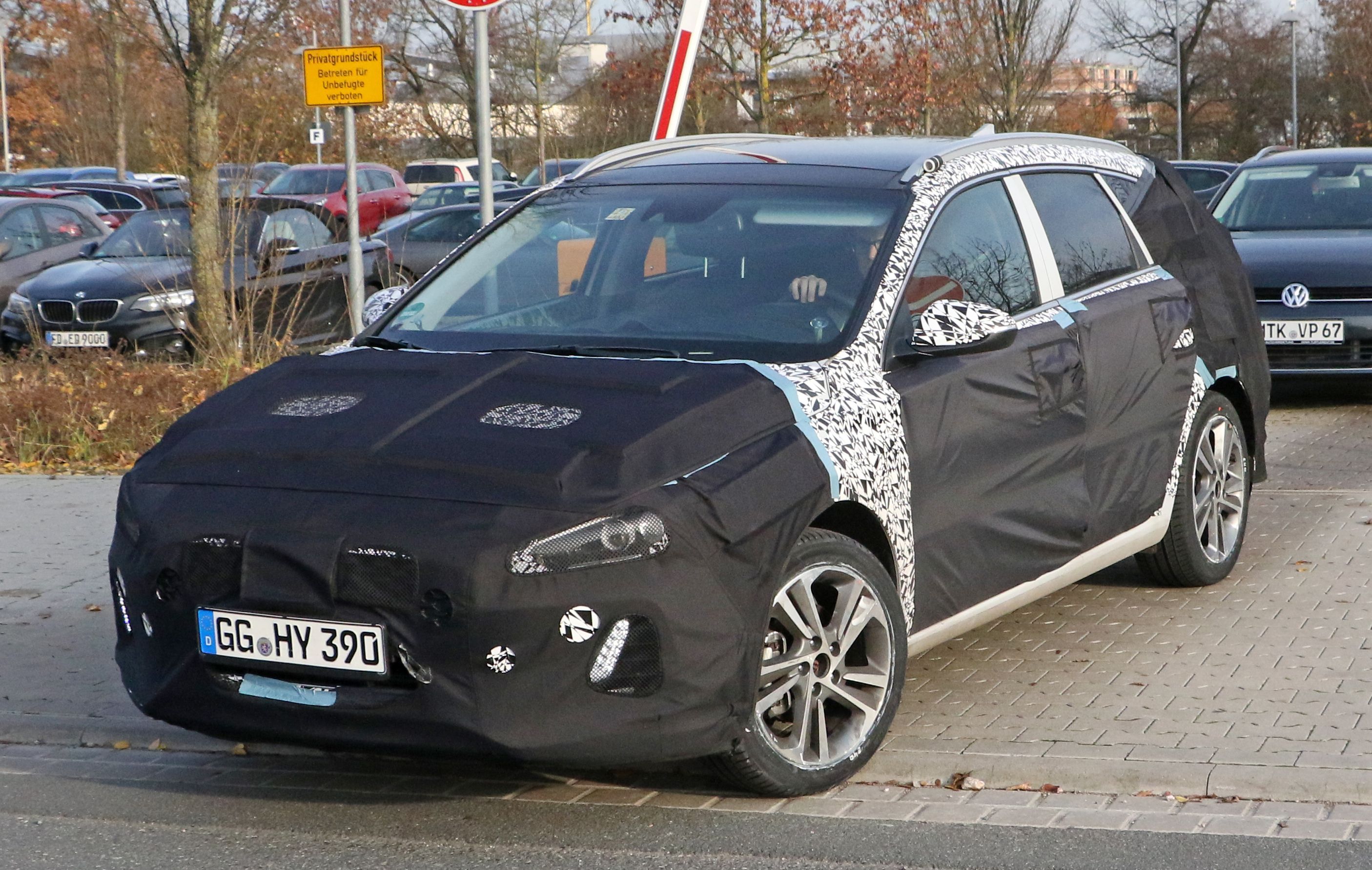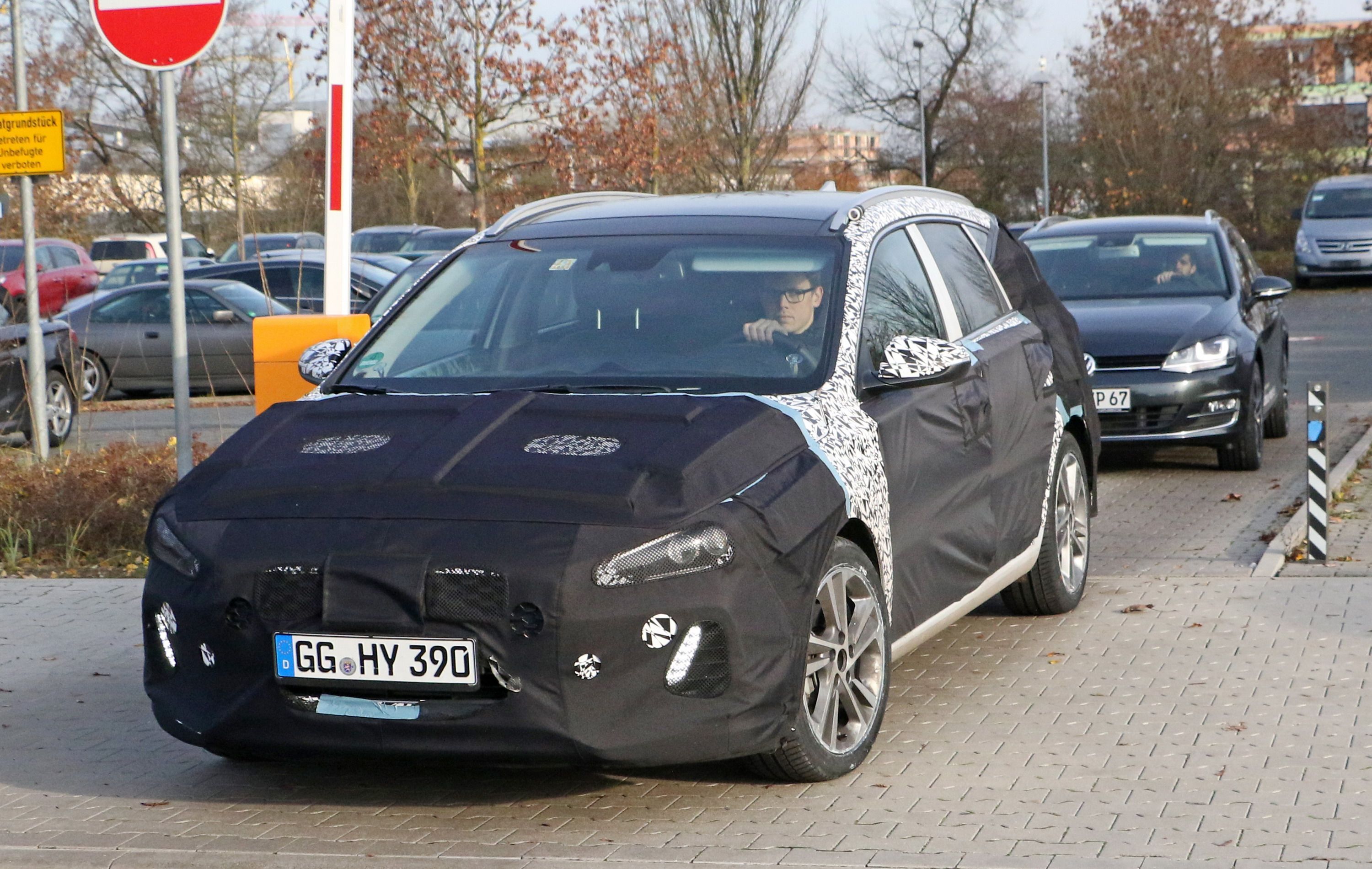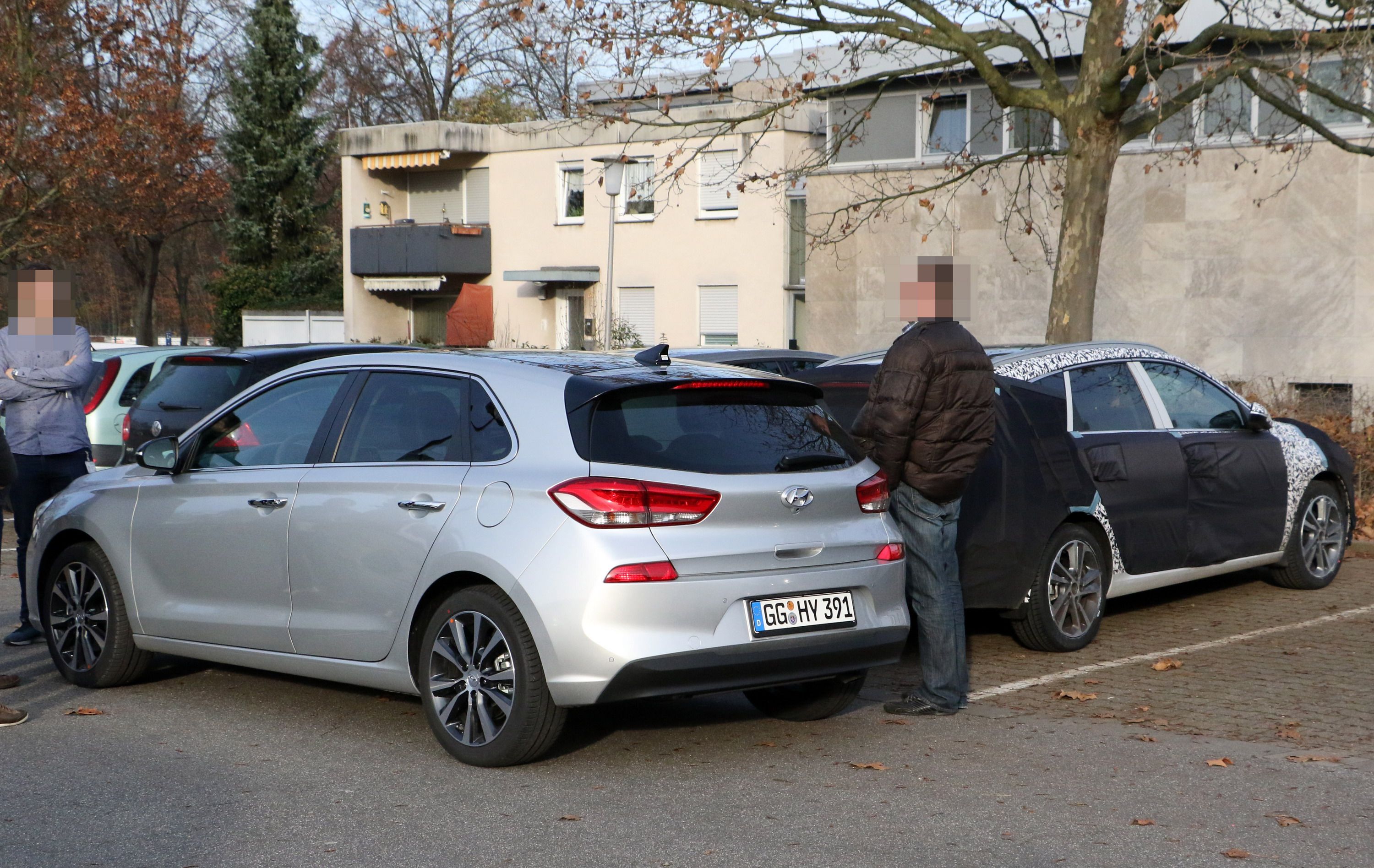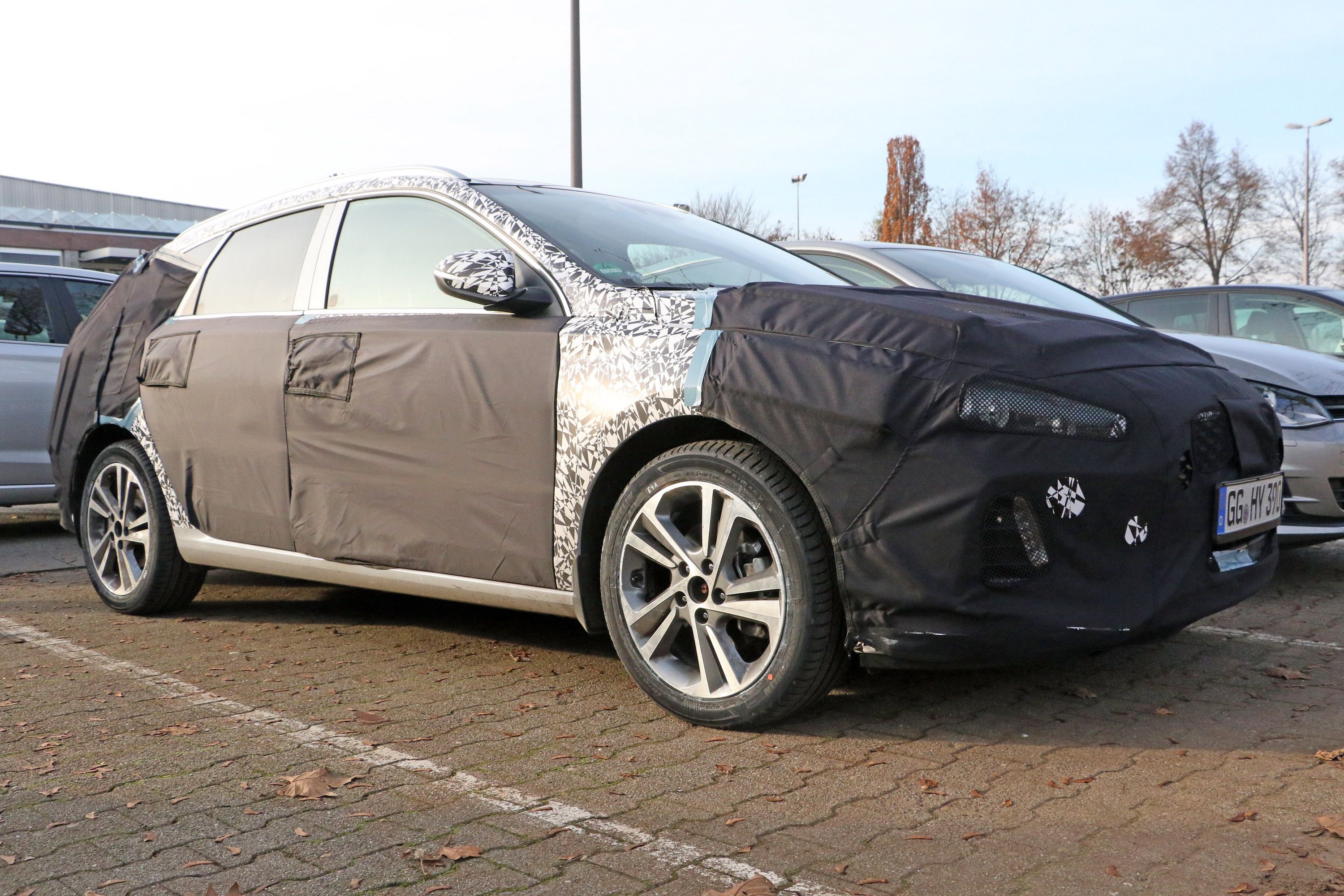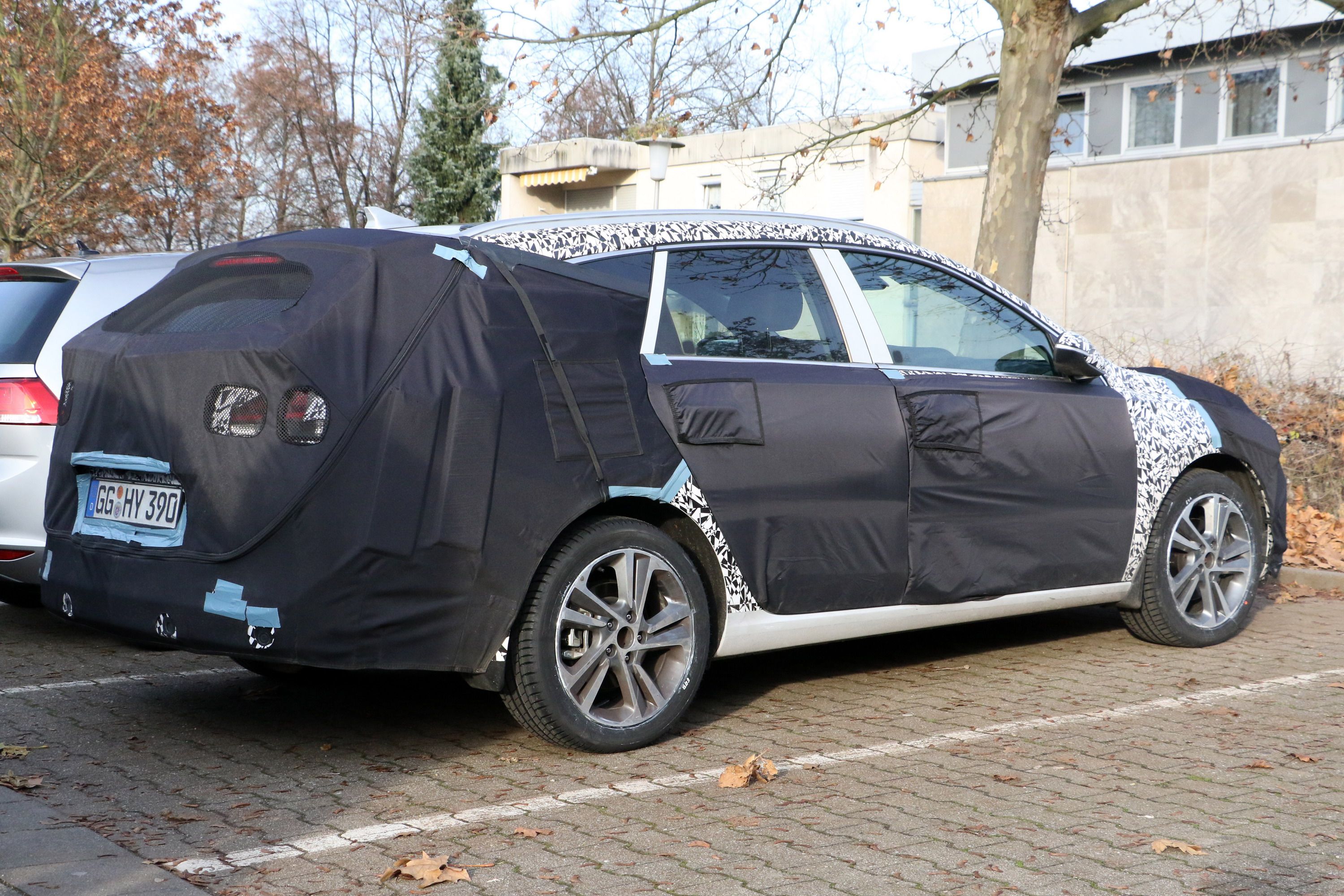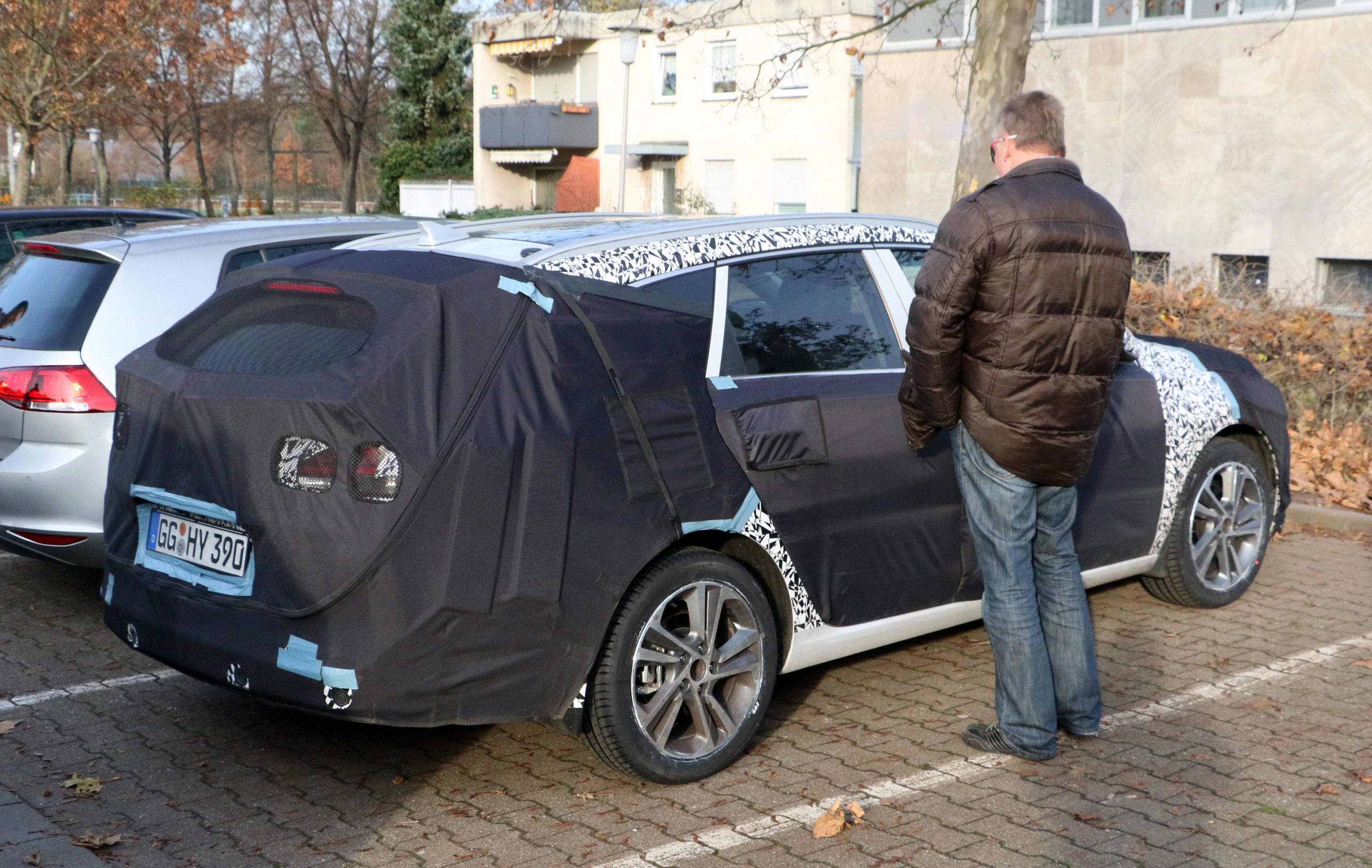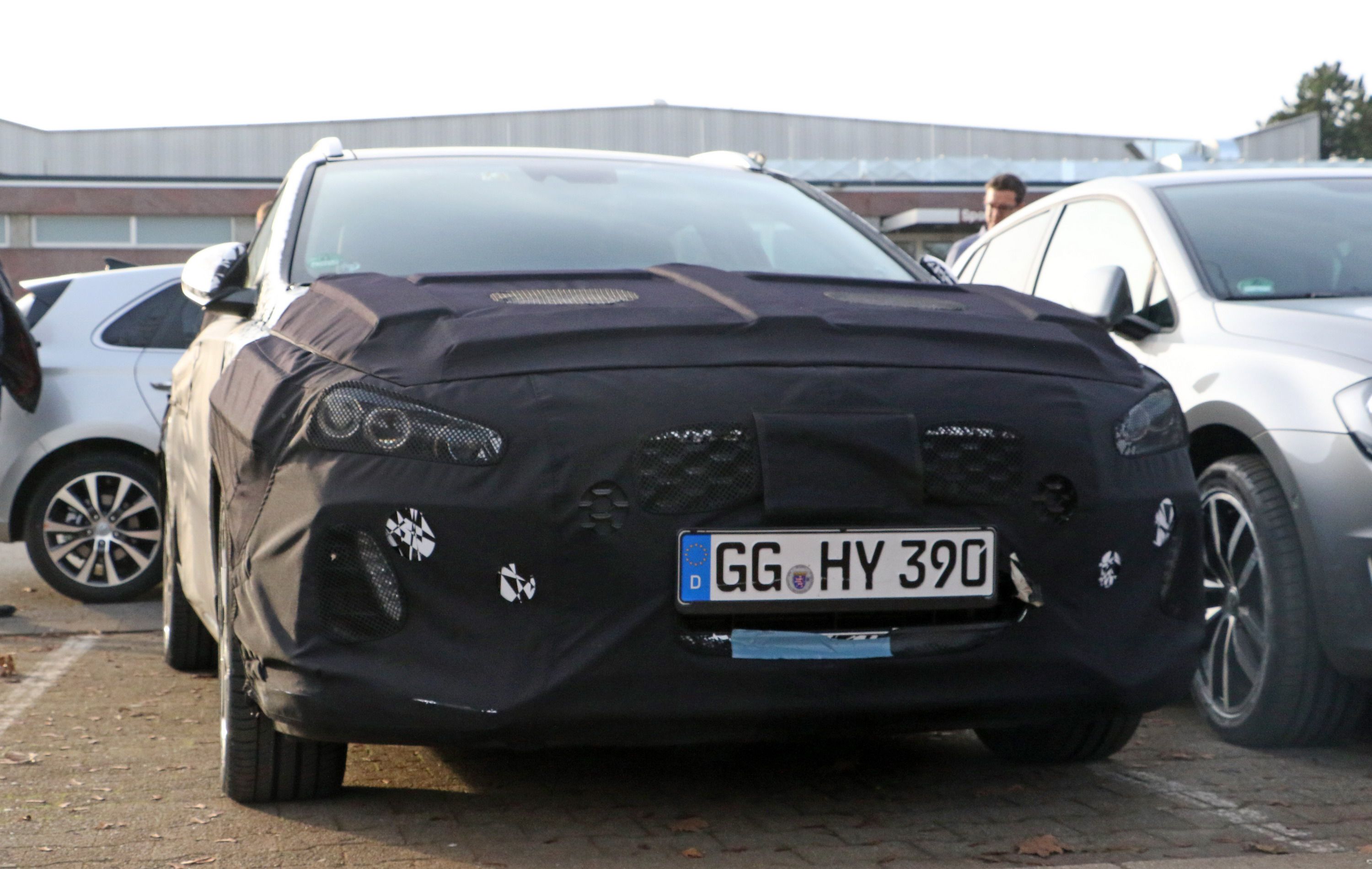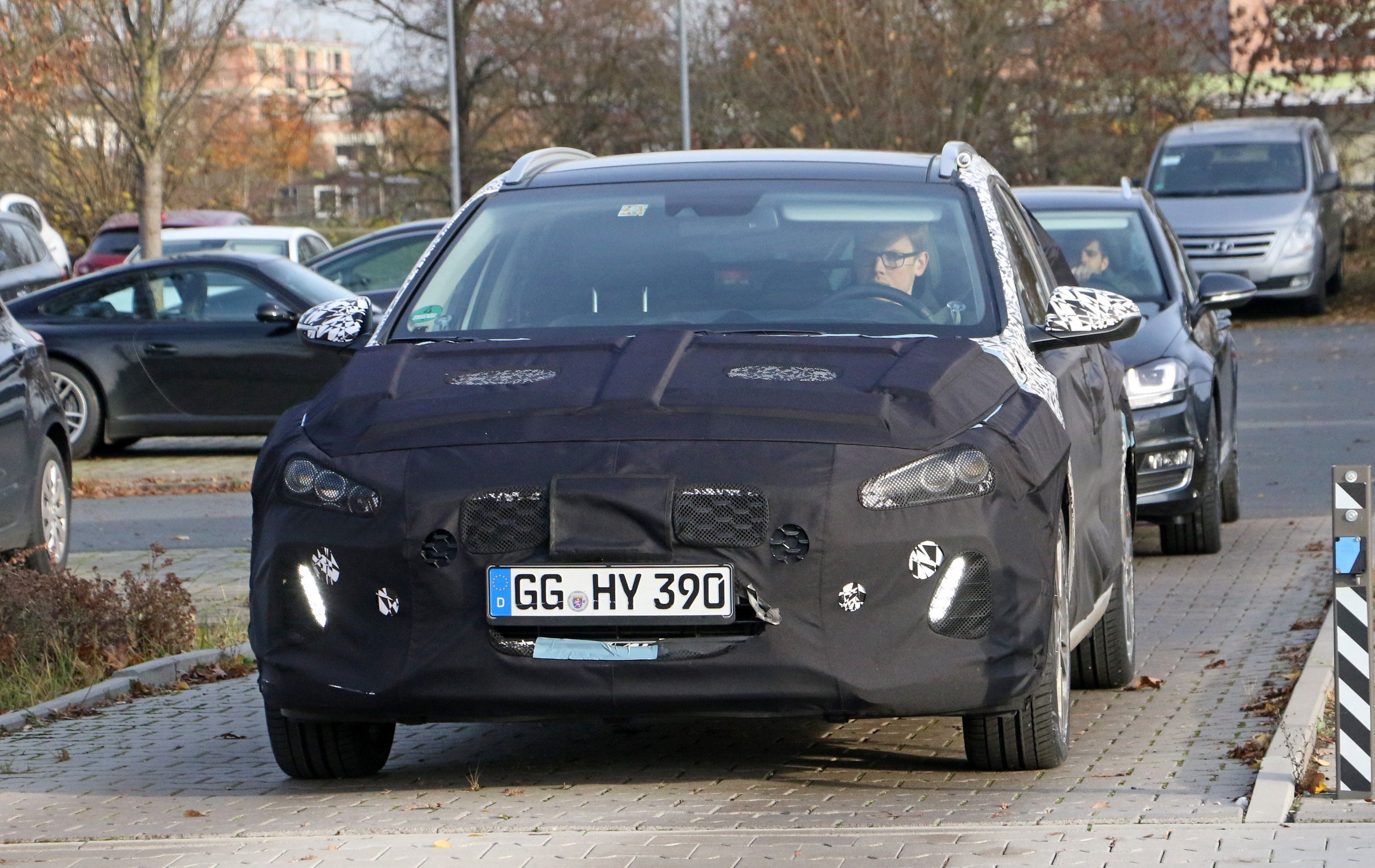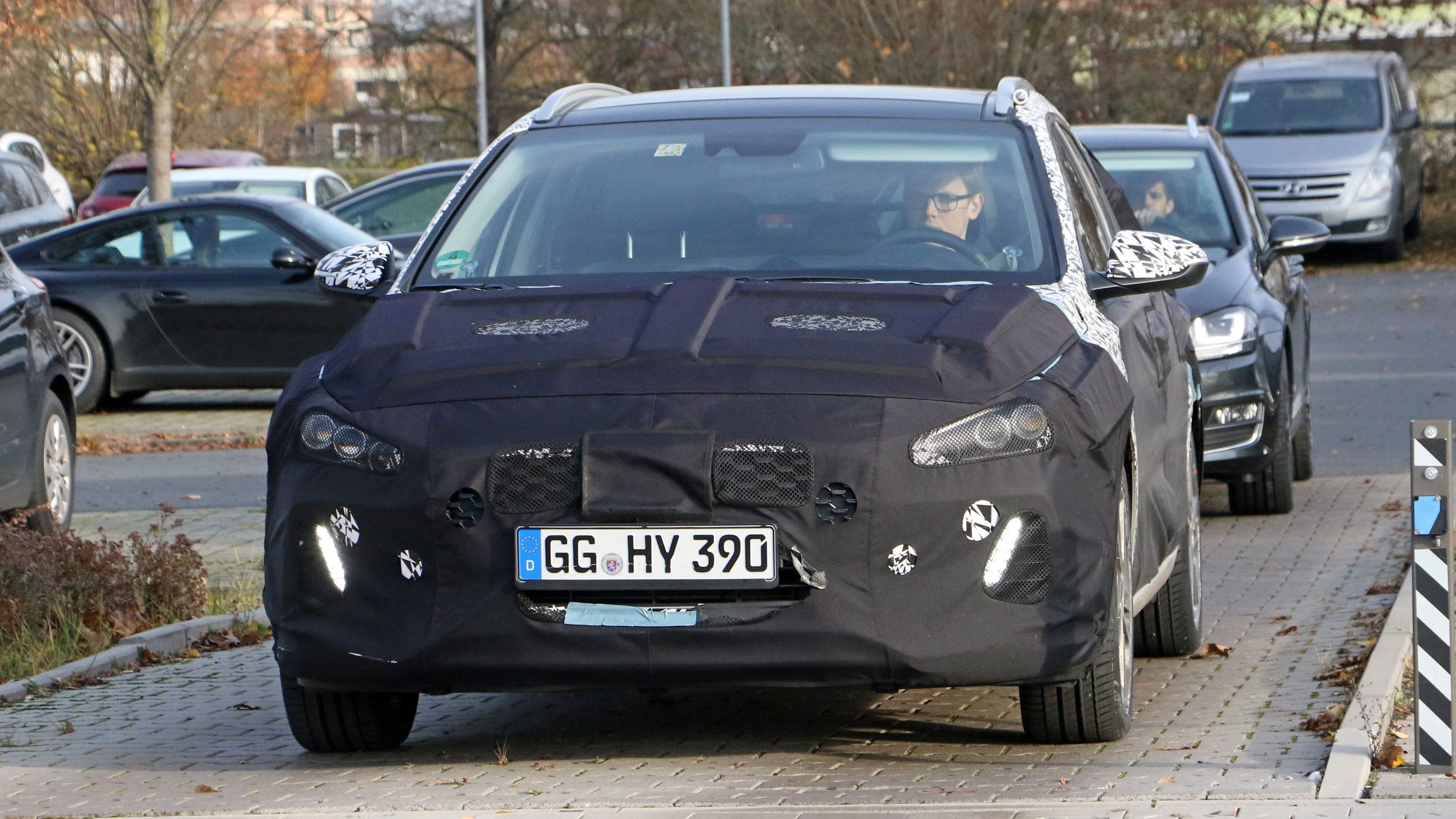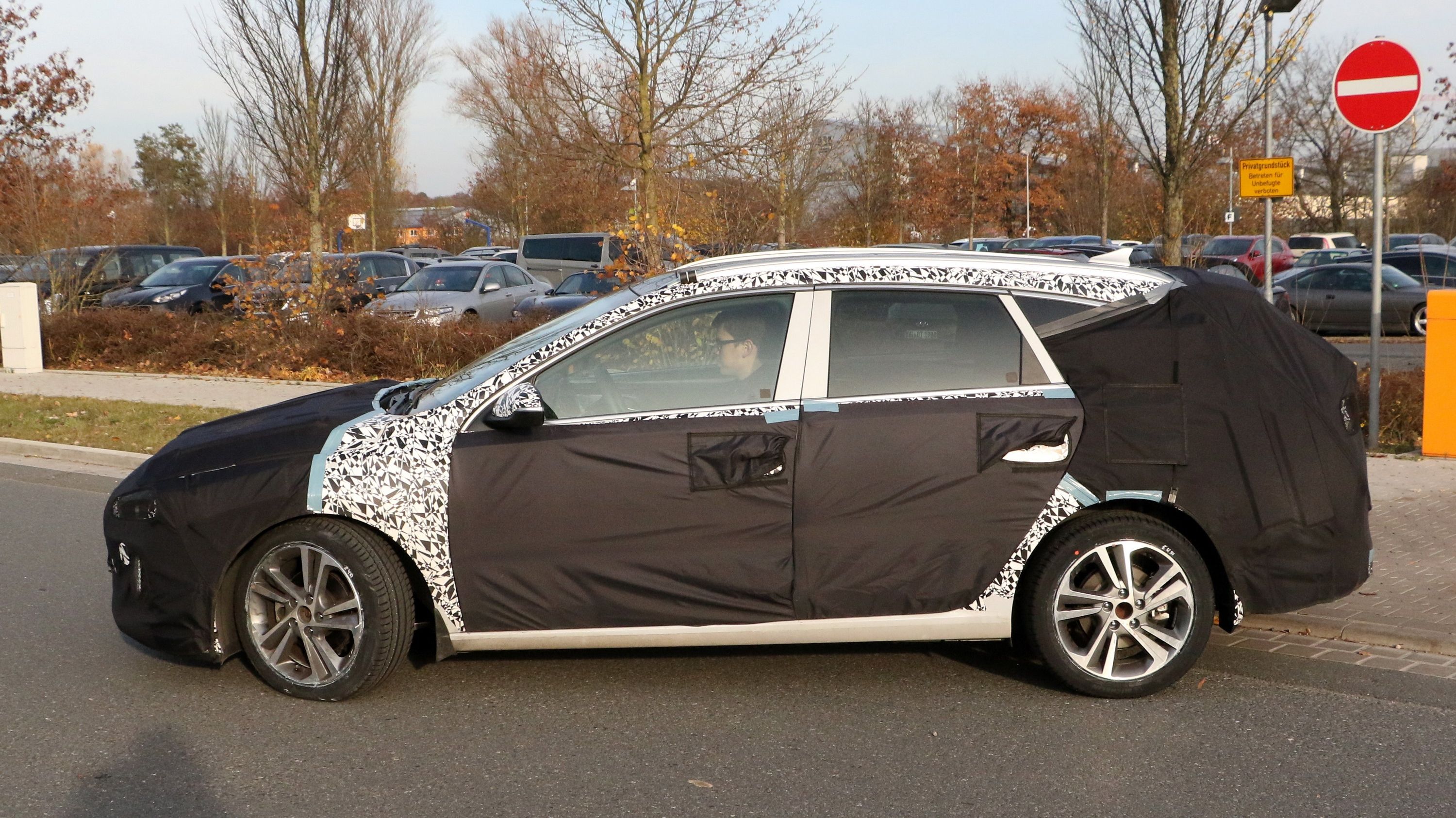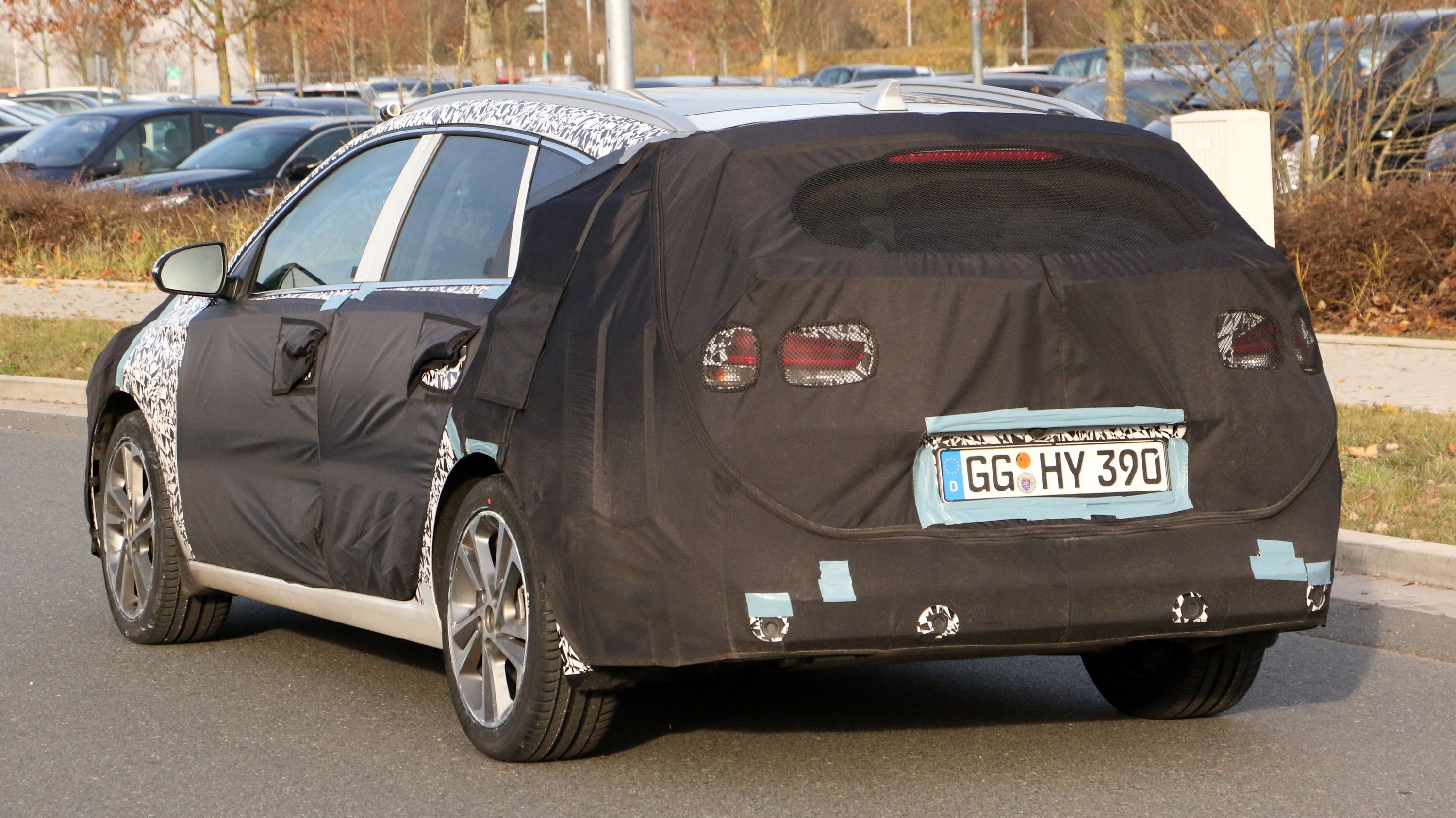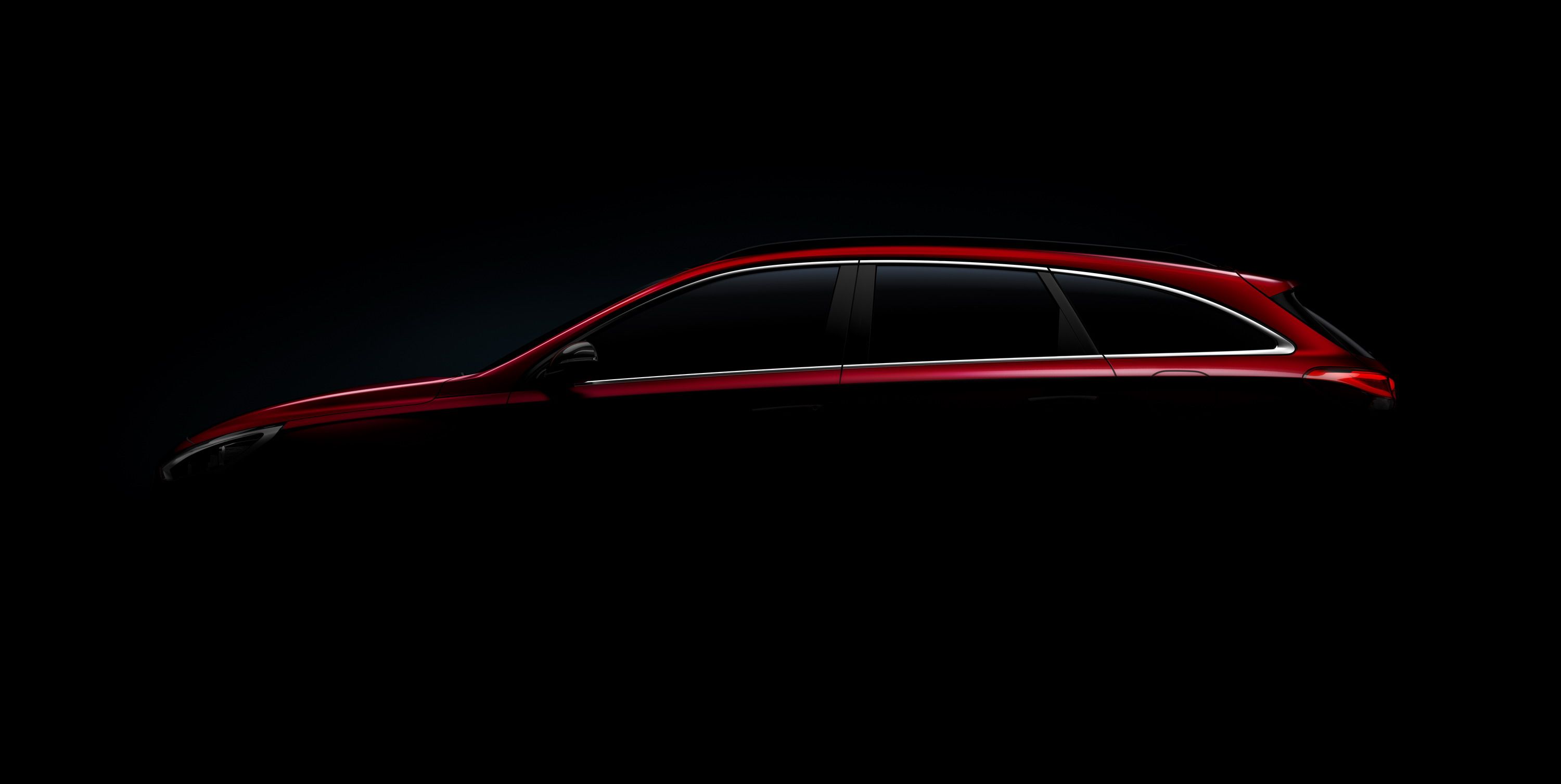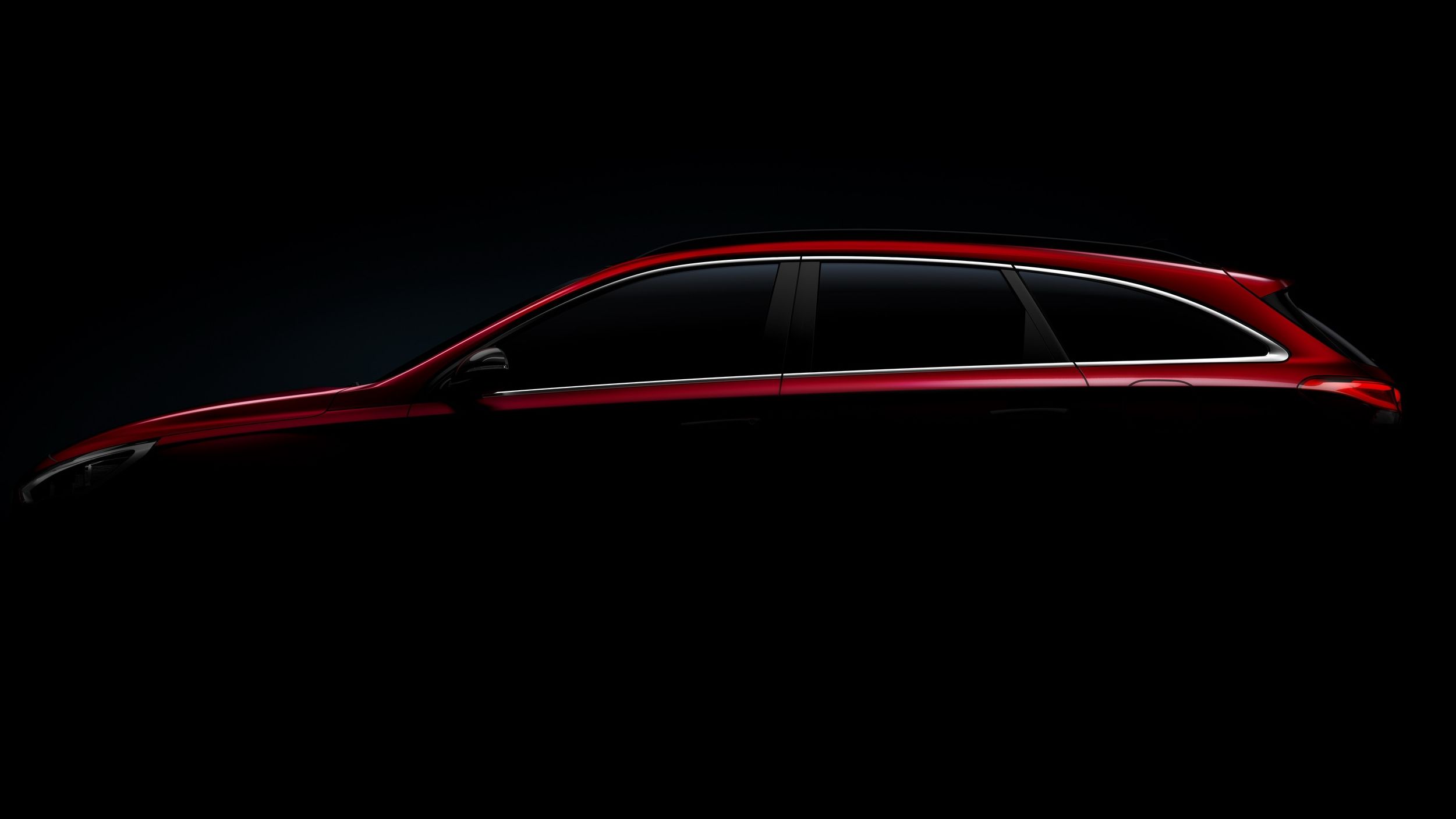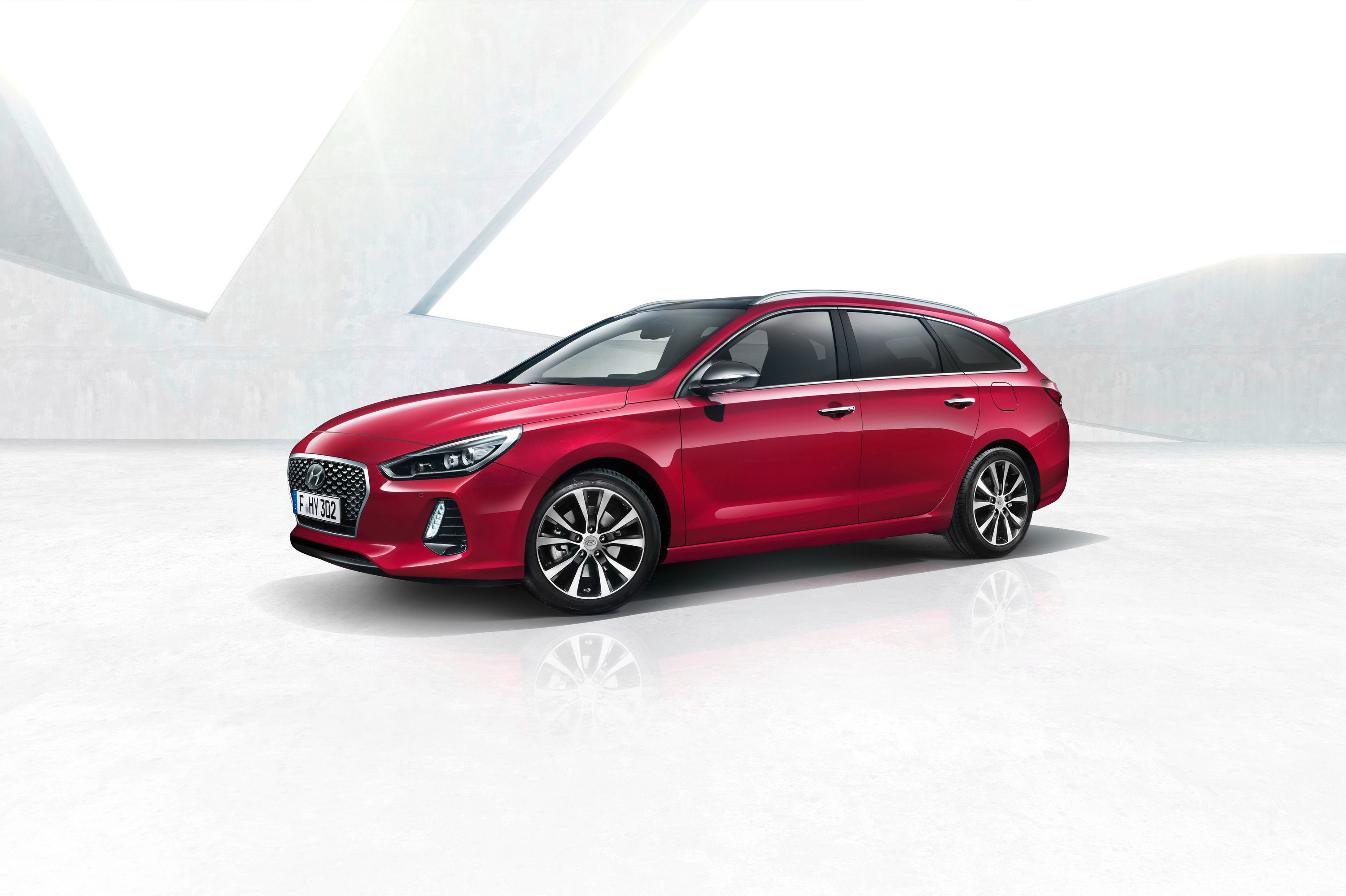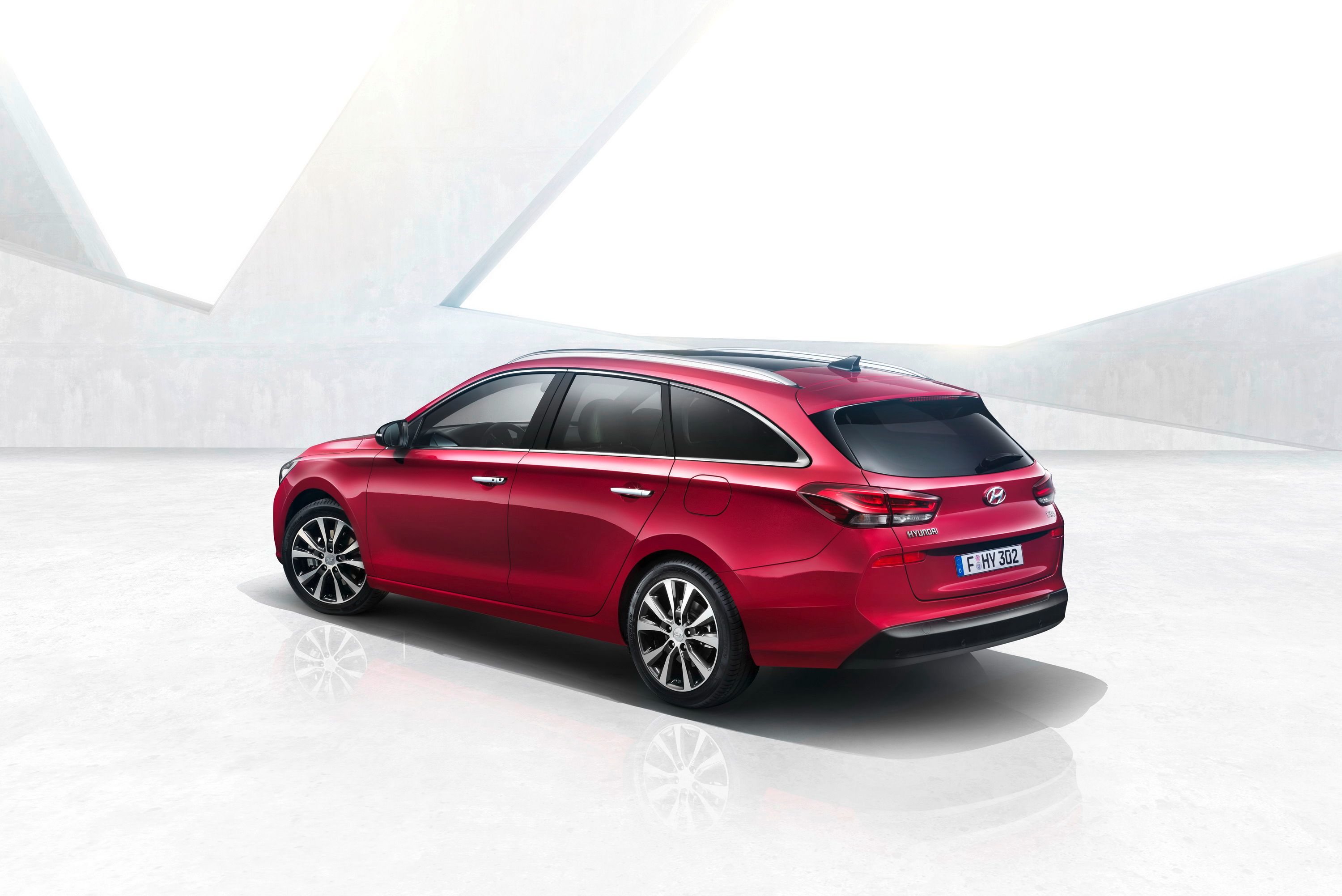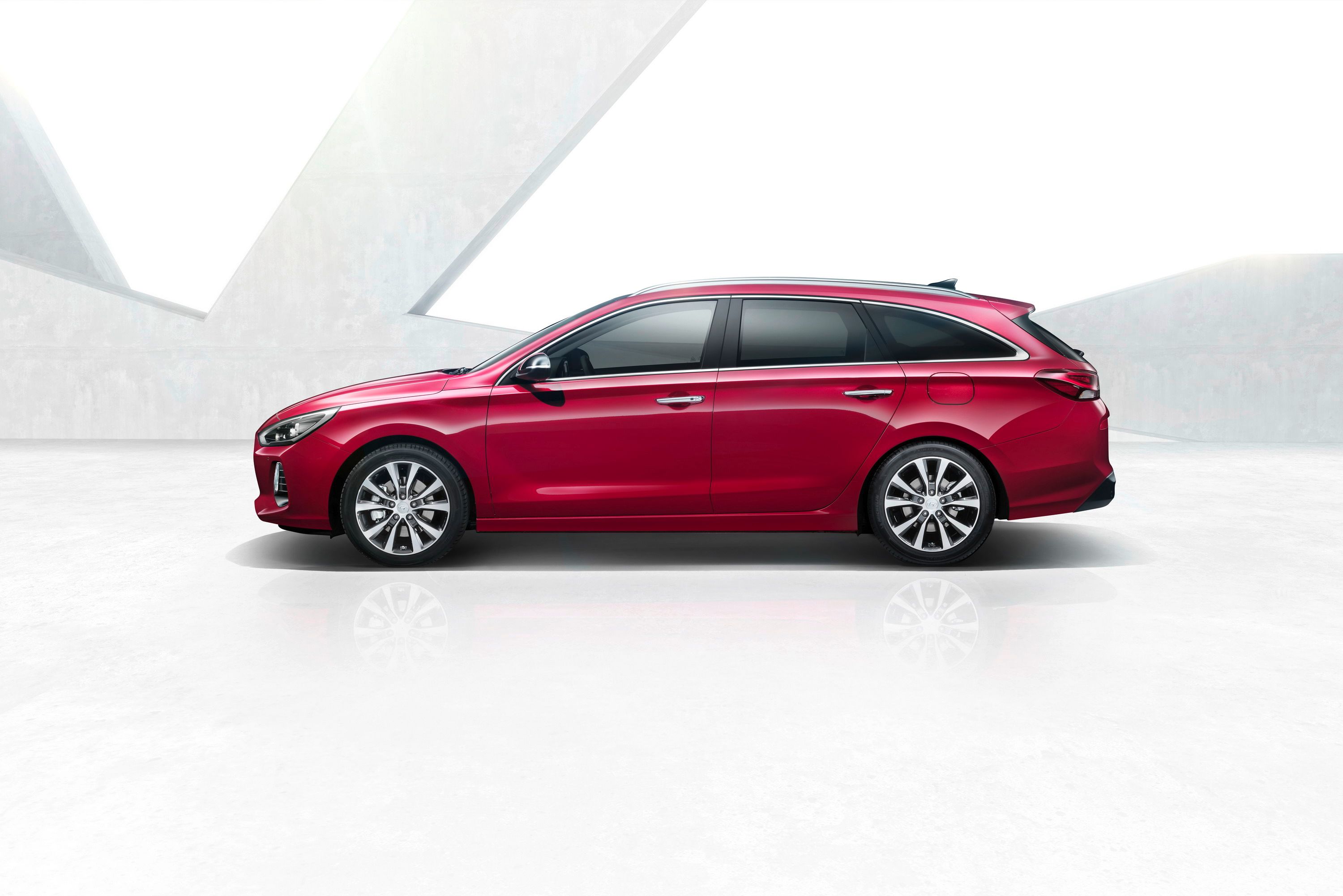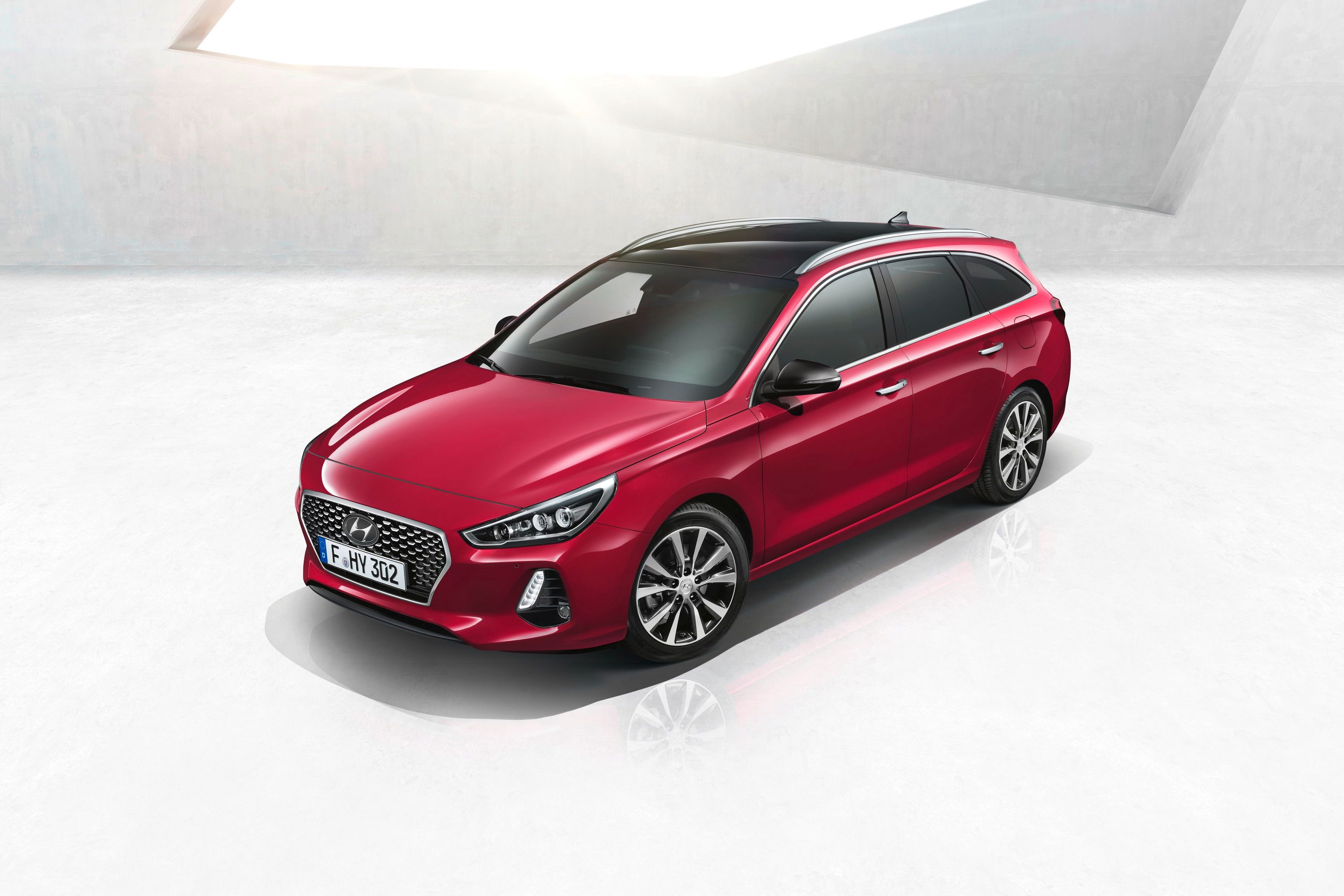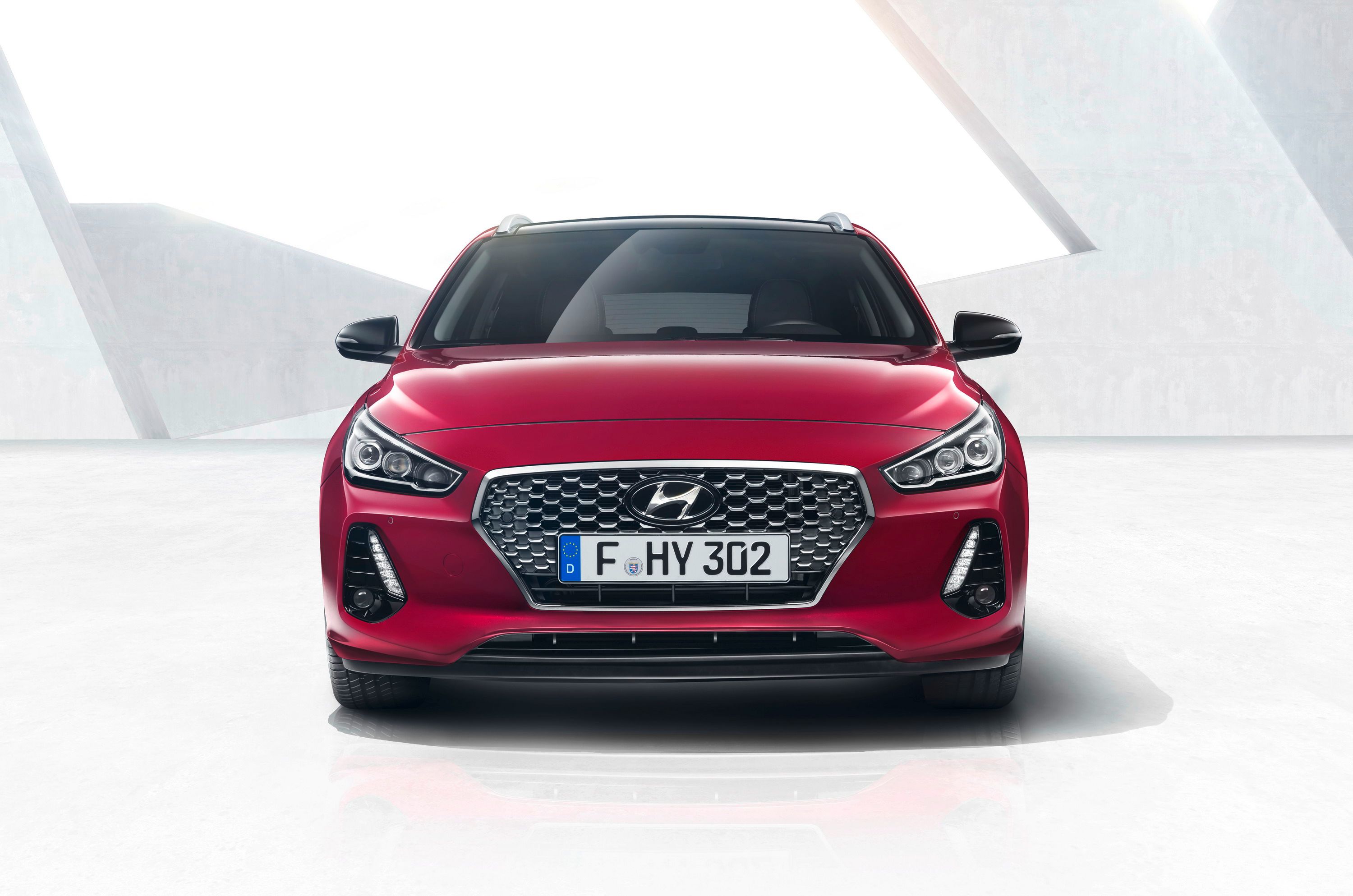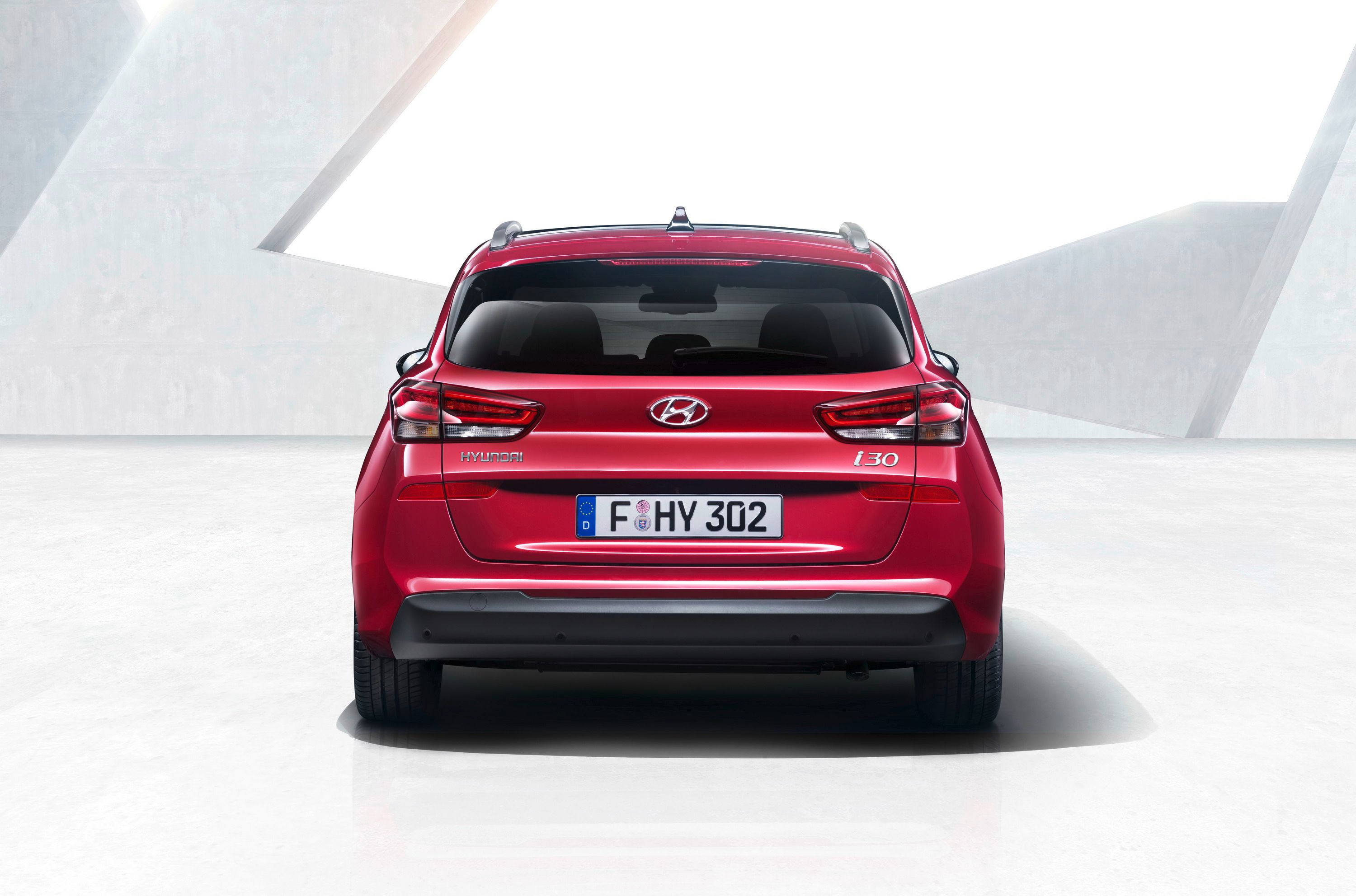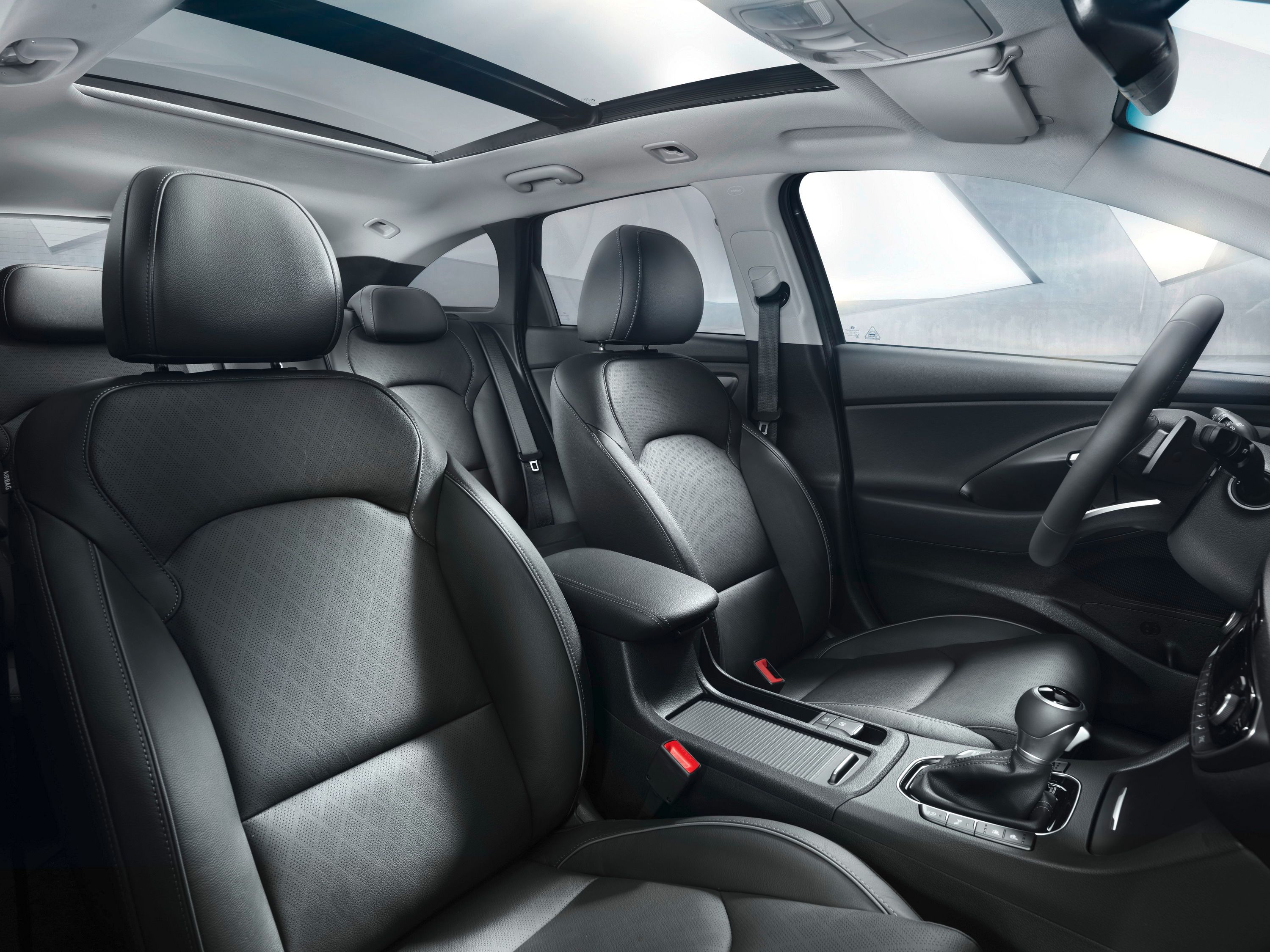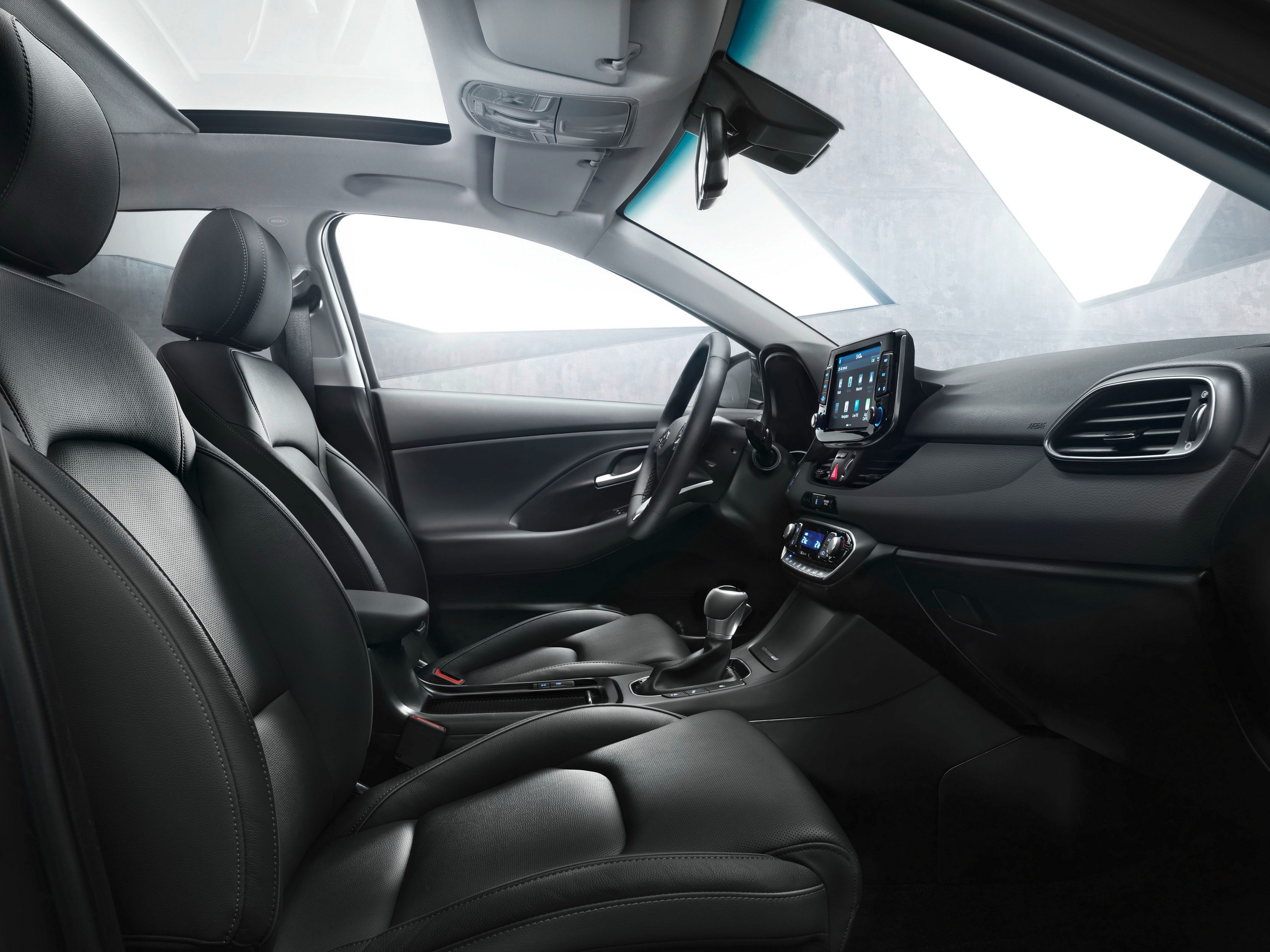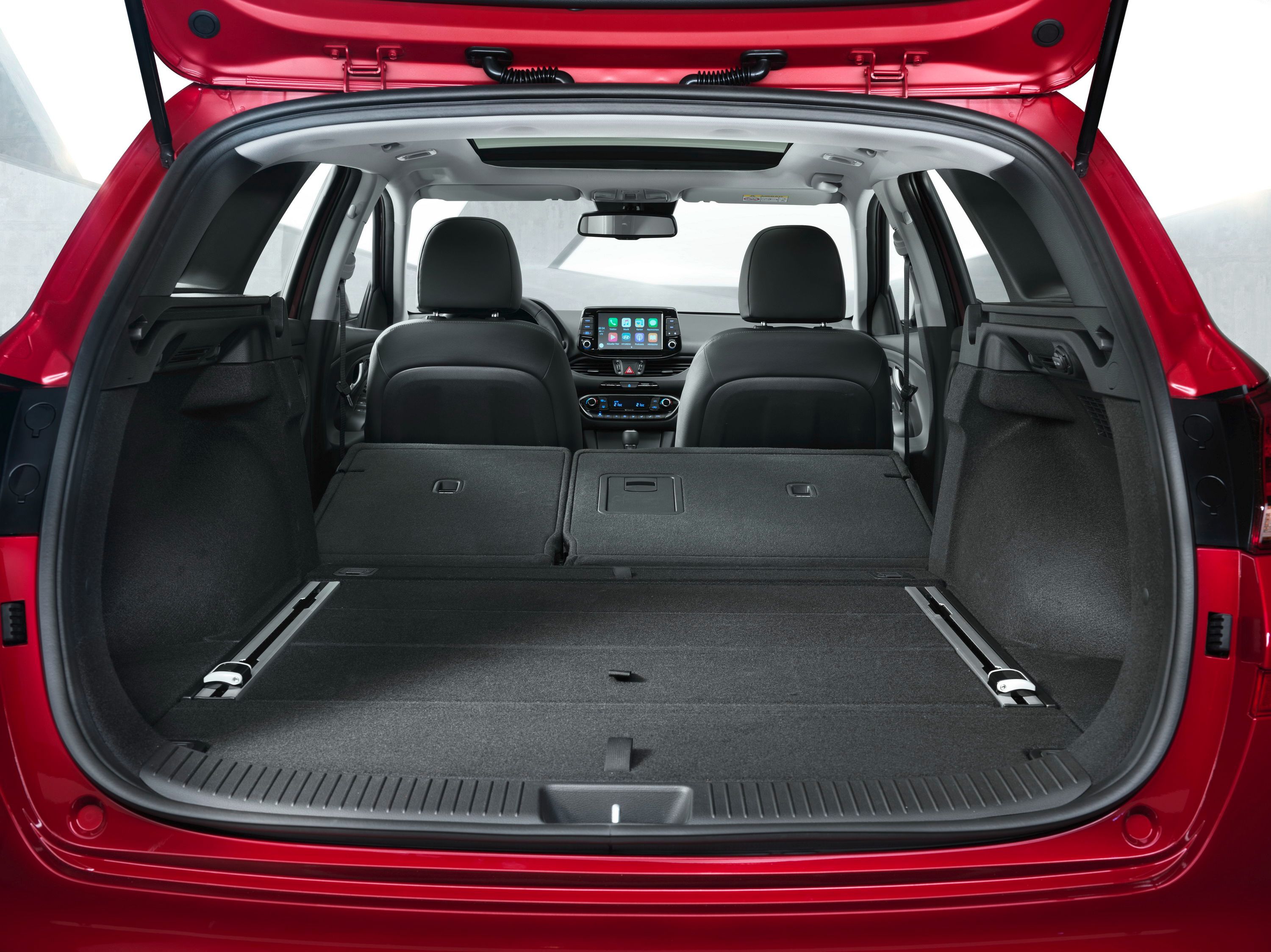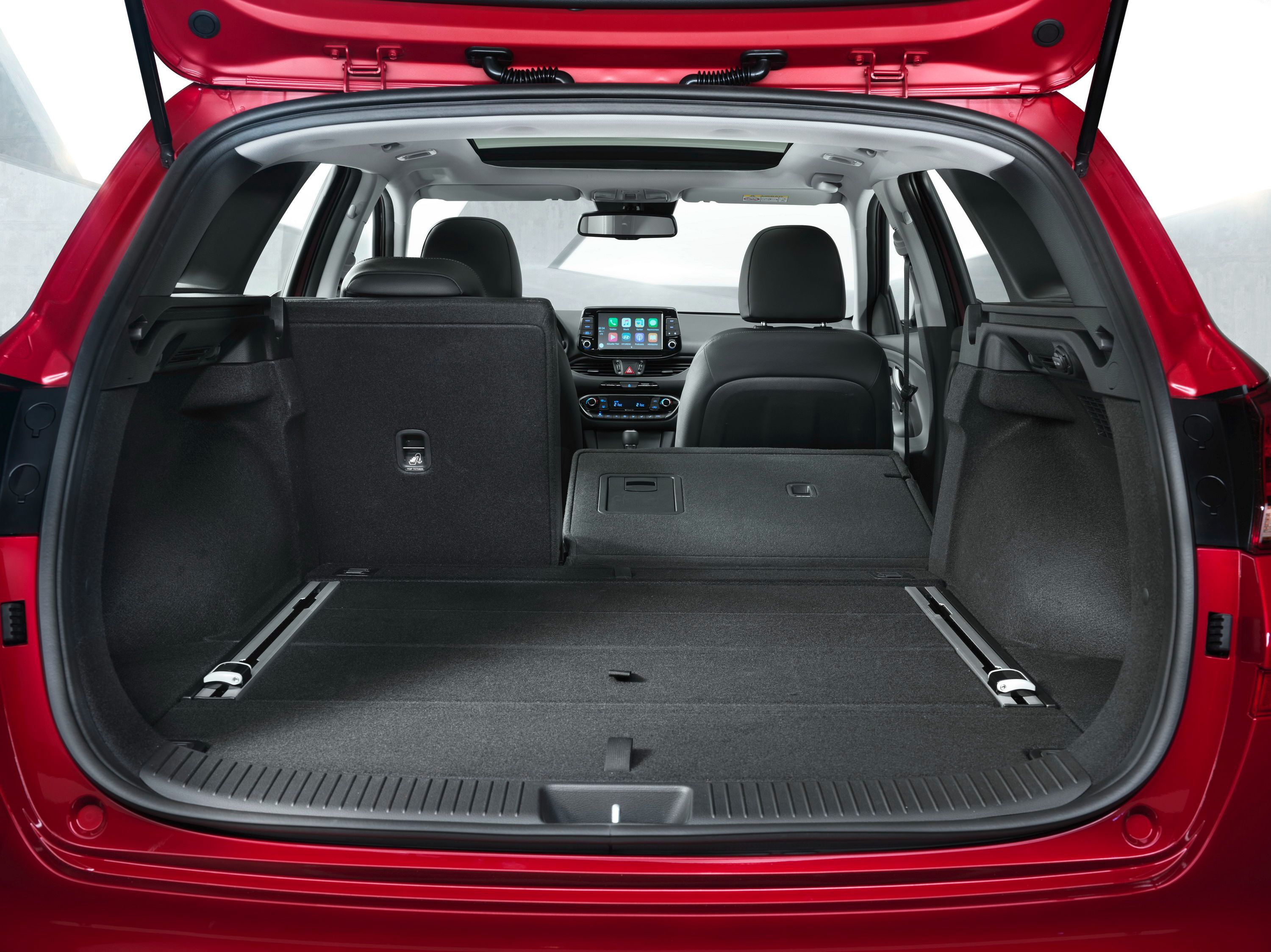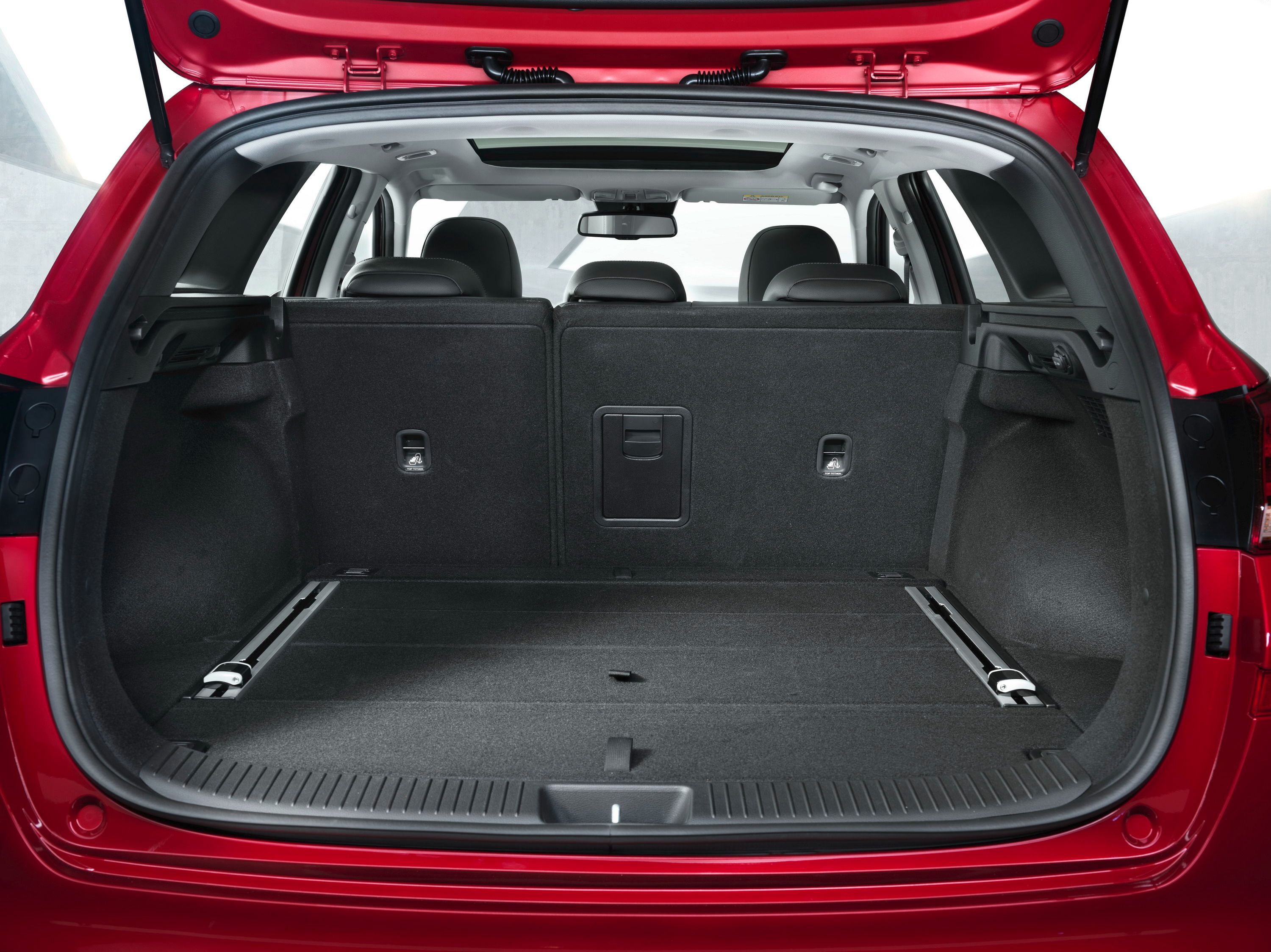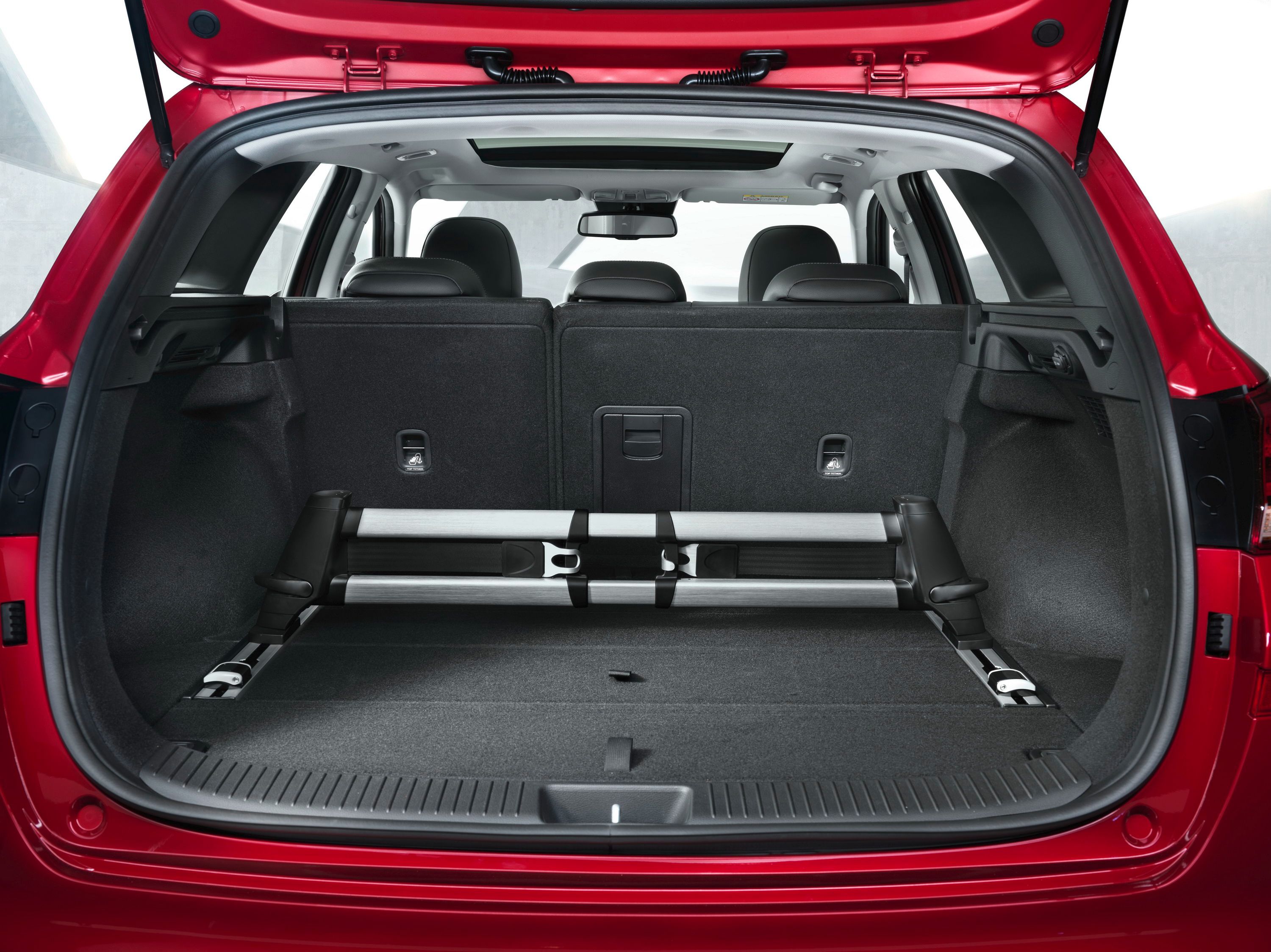Sold as the Elantra GT here in the U.S. and the Hyundai I30 in the rest of the world, Hyundai’s resident hatchback entered its third generation for the 2017 model year. The four-door hatchback has already made its debut, and now we’re looking at the I30 Wagon. It features a new, angular look on the outside with a cleaner and more modern layout on the inside. Standard technology includes things like a rear-view camera, phone connectivity via Bluetooth, USB, Android Auto, or Apple Car Play. Under the hood, the I30 comes complete with a handful of engines that includes a new, turbocharged four-banger that delivers 138 horsepower and 178 pound-feet of torque and a new 1.0-liter, three-cylinder that delivers 118 horsepower, and a 1.6-liter diesel with 108 horsepower.
In most cases, shorter models turned wagon usual differ very little, and that’s the case with the I30 wagon. It should be identical to the four-door hatch from the rear doors forward, but to the rear, there are some other minor differences outside of the longer boot. So far, it looks like the third-generation i30 lineup will include a four-door hatch, a four-door coupe, and this wagon. But it’s not all gravy because that means it’s unlikely that we’ll see the sportiest of all, the three-door i30 hatch, in this generation.
Thomas Burkle, the Chief Designer at Hyundai’s Design Center in Europe, said, “The New Generation i30 Tourer speaks the language of the i30 family in terms of design, and it carries the new Hyundai family identity – the Cascading Grille, the tapering roofline and the dynamic proportions give the Tourer an almost coupé-like silhouette. The sleek and dynamic profile is further emphasized by a rich chrome frame surrounding the side windows.”
So, we’ll go ahead and let that sink in a little as we talk a little bit about this wagon and what it brings to the third-generation i30 lineup.
Continue reading to learn more about the Hyundai i30 Wagon.
2017 Hyundai i30 Wagon
- Make: Array
- Model: 2017 Hyundai i30 Wagon
- [do not use] Vehicle Model: Array
Exterior
So, let’s start things off with some figures. The i30 Tourer measures in at 180.51-inches long, which puts it almost 10-inches longer than the i30 five-door hatch. Meanwhile, it sits just over 57-inches tall and is 70.66-inches high. The wheelbase comes in at 104.33-inches, which is identical to that of the five-door hatch it is based on. When equipped with roof racks, the i30 Tourer sits almost 58-inches tall.
As far as design goes, from the rear doors forward, everything is identical to the other i30 models in the lineup. It gets the same full-LED headlights, LED fog lights, and front grille that’s shaped something like an ACME diamond with a slight bend in the lower outside edges. A very tiny air dam sits at the very bottom of the fascia while the same hood helps to emphasize the Tourer’s overall sporty character; for a wagon, that is. Most of the side profiles carry over from the five-door i30 as well. That sharp body line below the waist and between the wheel wells remain. The upper bodyline carries on along the rear quarter to meet up with the outermost point of the taillight – just like on the five-door. The rear difference here comes in the form of extended rear quarters and a longer piece of stationary glass. The Rear most pillar is nearly identical to that of the five-door model, but things get a little thin toward the bottom of the rear quarter glass in comparison.
Even the rear of the i30 Tourer is remarkably similar to its shorter brethren. The same taillights are in place, however, the lights on the Tourer have a smaller clear area on the sides. Because Hyundai had to extend the rear quarters, the rear hatch also takes on a slightly different shape and angle, leading to longer side wings from the overhang. The reflectors on the rear fascia are also split between the rear fascia and the rear hatch. Down below, everything else is identical except for the extra length of the of the rear fascia.
All told, the wagon doesn’t look all that bad, and it seems as if Hyundai went the distance to make sure it looked nearly identical to the smaller i30s in the lineup.
Competing Designs
Wagons used to be a big thing here in the U.S., but much like the Minivan, their appeal has faded over the years. That doesn’t mean that the i30 wagon will soldier on unopposed, though. Its primary competition is the Volkswagen Golf Sportwagen, which carries a similar sticker price to that of the i30 and also features a sporty exterior. As far as body style goes, the i30 Wagon does compete with the BMW 3 Series Wagon and the Volvo V60, but those models are priced significantly higher, so they really aren’t direct competitors.
|
Volkswagen Golf Sportwagen |
Hyundai i30 Wagon |
|
|
Wheelbase (inches) |
103.5 |
TBA |
|
Length (inches) |
179.6 |
TBA |
|
Width (inches) |
70.8 |
TBA |
|
Height (inches) |
58.3 |
TBA |
Interior
With the exterior of the Tourer being nearly identical to the i30 five-door, it should come as no surprise that the interior is almost identical as well. But, that’s not really bad news, as the new i30 sports an upscale interior that is nowhere near anything like the outgoing model and features a decent amount of technology for a car in this price range. Up front, you get the long, horizontal dash with restyled HVAC vents and an all-new infotainment display that almost looks to float above the center stack – something generally reserved for cars of the German design. The HVAC controls and instrument cluster are both semi-digital units with the HVAC having a digital display for temperature settings and the cluster having a small TFT in between the speedo and tachometer.
Moving farther back in the cabin, you’ll find higher quality materials used for the seats and steering wheel, the latter of which comes with a new design and heating to keep those hands warm on cold mornings. If you want leather seating, however, you’ll have to select an option box, but the driver’s seat does have a memory function as standard equipment. This might be a bummer to some who prefer leather, but it’s also a way Hyundai can keep the entry-model within an affordable range for your everyday working man (or woman.) The same center console and door trim panels carry over, as should the three interior upholstery options: Oceanids Black in cloth, the same color in leather with an added diamond stitching pattern, and indigo Blue/Oceanids Black which is available in leather upholstery only.
The rear seats are identical to that of the i30 five-door and feature the same 60/40-split. Passenger room for front and rear passengers should be the same as well, but behind the seats is where the big difference is. The five-door i30 has just 395 liters of space or 13.9 cubic feet, but the i30 Tourer – it has a total of 602 liters or 21.25 cubic-feet with the seats up. That’s a big difference for a car that’s only 10-inches longer than its smaller brethren. With the rear seats laid down, that space increases to 1,650 liters or 25.27 cubic-feet. The rear cargo area has a lift up floor that folds up, and there is a rail on each side of the cargo area that can be used to secure items that you don’t want bouncing around back there.
On the technology front, the standard list of equipment includes a dynamic rear-view camera, Bluetooth and USB phone connectivity, and a wireless inductive charging pad for your mobile phone. There is an optional eight-inch navigation system that comes with Apple CarPlay and Android Auto phone connectivity, 3D maps, and a seven-year subscription to TomTom LIVE.
The Competition
When it comes to comparing the i30 to a model like the Volkswagen Golf Sportwagen, it’s really hit and miss as to which one is better. See, the Golf Sportwagen, like all entry-level Golf models is more utilitarian in nature than anything. The rear seats fold flat to provide awesome cargo room (we assume, this is a feature the i30 wagon will have) while the dash features a rather simple layout. The instrument cluster is a traditional two-gauge design, while the infotainment system is integrated into the center stack between a large pair of HVAC vents and the HVAC controls. The center console offers little in the way of storage, but there is a pair of cup holders. The big feature in the Sportwagen is that large panoramic roof that provides a view of the sky above for front and rear passengers. We don’t know if the i30 wagon will have such a feature, but if it doesn’t, the Sportwagen will get our vote hands down.
Outside of this, I also want to point out that while the i30 wagon will likely be significantly cheaper than luxury models, the interior amenities and overall comfort is comparable to that of the BMW 3 Series wagon and the Volvo V60. When optioned correctly, the i30 Wagon will come complete with all of the technology needed to pose a strong opposition to these more luxurious models, including navigation, and phone connectivity via Android Auto and Apple CarPlay. Here’s a table of competing dimensions for all models:
|
Volkswagen Golf Sportwagen |
BMW 3 Series Wagon |
Volvo V60 |
Hyundai i30 Wagon |
|
|
Head room front/rear (inches) |
38.6/38.6 |
40/4 |
38.7/37.6 |
TBA |
|
Leg room front/rear (inches) |
41.2/35.6 |
42.0/35.0 |
41.9/33.5 |
TBA |
|
Shoulder room front/rear (inches) |
55.9/53.9 |
55.1/55.1 |
57.0/56.2 |
TBA |
|
Cargo Volume |
30.4 cu ft |
27.5 – 61.5 cu ft |
43.8 cu.ft |
TBA |
Drivetrain
The i30 Tourer will be available with three different engines at launch. To kick things off, there’s a 1.6-liter diesel mill that delivers 108 horsepower. Hyundai has yet to release full specs for the diesel, but it’s likely a carryover from the last-gen model so it should have 206 pound-feet of torque with a six-speed manual transmission or 221 pound-feet of torque when equipped with a DCT automatic. There’s no word as to whether or not the up-tuned diesel with 133 horsepower will make it into the lineup or not.
On the gasoline-drinking front, Hyundai has brought two new engines into the lineup. It starts out with a 1.0-liter three-cylinder with 118 horsepower on tap. The other offering is a 1.4-liter with 138 horsepower. Like the diesel engine, Hyundai hasn’t offered up any torque numbers or performance specs, so you’ll have to wait for those specifics, but both gasoline engines should bring some kind of improvement over the 1.6-liter that was available in the last-gen model. The three-banger offers the same amount of horsepower but likely better fuel economy. The 1.4-liter comes with an extra 20 ponies on tap which should lead to better acceleration while still offering better fuel economy thanks to turbocharging. There’s no word on what will handle shifting duties, but expect a six-speed manual and a seven-speed DCT to be the main offerings.
|
i30 Wagon Diesel |
i30 1.0 |
i30 1.4 |
|
|
Engine |
1.6-liter four-cylinder |
1.0-liter three-cylinder |
1.4-liter four-cylinder |
|
Horsepower |
108 HP |
118 HP |
138 HP |
|
Torque |
206 LB-FT |
TBA |
TBA |
|
Transmission |
6-speed manual |
6-speed manual |
6-speed manual |
The Competition
When it comes to competition, one of the biggest deciding factors is what motivates the car you’re looking to buy. If you go with something that is underpowered (like an i30 wagon that has barely 100 horsepower, for example) you’re going to find that getting up to speed can be annoyingly slow, and if you make good use of cargo space, that can slow you down even more. So, Hyundai really has to do something if it wants to compete with anything, even the VW Sportwagen. See, the Sportwagen comes standard with a 1.8-liter, turbocharged, gasoline engine that delivers a cool 170 horsepower and 184 pound-feet of torque. Like the i30, you won’t be winning any drag races, but it’s more than enough power to get you from A to B while achieving decent fuel economy. By the way, the VW Golf Sportwagen manages to achieve 25 mpg in the city and 35 mpg on the highway – not bad for a wagon.
With that out of the way, let’s look at some of the more expensive models out there. While the i30 wagon seems to compete pretty well in the looks and interior departments, in the drivetrain department, more luxurious models like the Volvo V60 and the BMW 3 Series Wagon take the cake in the drivetrain department. The V60 comes standard with a 2.0-liter turbocharged mill that delivers 240 horsepower and 258 pound-feet of torque. Front-wheel drive is standard, but for $2,000 more, the V60 can be had with all-wheel drive. It also achieves similar fuel economy, garnering 25 mpg in the city and 36 mpg on the highway. Moving over to the 3 Series Wagon also gets you’re a turbocharged 2.0-liter with 248 horsepower and 258 pound-feet of torque. Shifting duties on the 3 Series are handled by an eight-speed automatic transmission.
So, as you can see, the Hyundai i30 Wagon really doesn’t have a chance against the Volvo or the 3 Series, but the point is that Hyundai could do just a little more and have this much cheaper model compete against luxury models. The interior and exterior are dialed in enough; it’s just up to Hyundai to come up with a more powerful engine option for the i30 Wagon, and we could have an underdog in the ring. Until then, however, look to the VW Golf Sportwagen, which also offers superior performance, as the main competition.
|
Volkswagen Golf Sportwagen |
BMW 3 Series Wagon |
Volvo V60 T5 |
|
|
Engine |
1.8-liter inline four cylinder |
2.0-liter BMW TwinPower Turbo inline 4-cylinder |
2.0 Liter 4-Cylinder, Turbocharged, Direct-Injection |
|
Horsepower |
170 HP @ 4,500 RPM |
248 HP @ 5,200 RPM |
240 HP @ 5,600 RPM |
|
Torque |
184 LB-FT @ 1,600 RPM |
258 LB-FT @ 1,450–4,800 RPM |
258 LB-FT @ 1,500-4,800 RPM |
|
Engine |
3,063 LBS |
3,867 Lbs |
3,670 Lbs |
|
Horsepower |
25/35/28 |
23/33/26 |
25/36 |
|
Torque |
7.0 seconds |
5.7 seconds |
6.4 seconds |
|
Curb weight |
125 mph |
130 mph |
135 mph |
Safety
Standard safety features included in the i30 Tourer include autonomous emergency braking, driver attention alert, high-beam assist, and lane-keep assist. But, there are also optional safety features that include, advanced smart cruise control – which accelerates and brakes automatically up to 111 mph – blind spot detection, rear cross-traffic alert, and speed limit information function. The latter reads road speed signs and displays the speed limit on the navigation screen and in that little TFT display of the instrument cluster. There’s no word on how much the extra safety features will cost if you want to option them, but they will likely be wrapped up all in one package, and will likely be standard on the range-topping model.
Pricing
If the i30 Wagon was coming to the U.S., it would be offered as a Variant of the Elantra GT. Over in Europe, the i30 Tourer is currently going for £17,395. Expect to see that price increase by as much as 1,000 pounds. At current conversion rates, that would put the i30 at about $23,000. That’s significantly cheaper than models like the 3 Series Wagon and the Volvo V60, and a little more expensive than the Sportwagen, which starts out at around $21,580. Of course, the Sportwagen still beats the Hyundai in pricing and horsepower on the entry-level model, so that’s certainly the way to go if you want as much power as possible without diving into the $35,000 luxury models.
Competition
Volkswagen Golf SportWagen
The Volkswagen Golf was updated for the 2014 model year and is going through a refresh for the 2018 model year, so when it comes to choosing between the Hyundai and the Golf, you’re looking at two fresh designs. As far as looks go, the Sportwagen will be a little less eventful compared to the i30, so if you want more aggressive styling, the i30 is the way to go. But, the Golf features similar amenities inside and comes with more power, so if power feeds your desires, you’re best bet is the SportWagen hands down. At the time of this writing, the Sportwagen goes for $21,580 here in the U.S., but can go for as much as $29,970 in the range-topping SEL trim. Either way, it’s a stout alternative to the i30, and will probably offer more power all the way around.
Read the full review here.
Conclusion
While the materials used inside, and the overall look and feel of the i30 is well above what you would expect from a car priced in the low $20,000s, the i30 – in any form – is underpowered compared to the competition. This plays a major role in decision making for a lot of people, and if that’s you, going with its main competitor, the VW Golf Sportwagen, is the way to go. Of course, if you don’t mind spending a little extra money, you could go with more luxurious models like the Volvo V60 and BMW 3 Series, which also offer significantly more power, but come at a much higher cost. At the end of the day, the i30 represents an exterior look that is pleasing, an interior that is upscale, but less power than desired by most. It’s not a bad vehicle, but the Golf Sportwagen seems like the better option all the way around. But, what do you think about the new i30 Tourer? Let us know in the comments section below.
Official Teaser
We know that the i30 wagon is set to make its debut on March 7th at the Geneva Auto Show, but before that time comes, Hyundai has seen fit to release a teaser image that shows off the new wagon from the waist up. It’s not much to go by, but as you can see, the roof as a slight slope in the rear that leads the way into the overhang on the rear hatch. Outside of this, the side glass gets progressively smaller toward the rear, and down below the waistline sits a fairly dominant body line that effectively links the headlights up front to the wrap around taillights out back.
With the release of the teaser you see above, Thomas Burkle – the Chief Designer over at Hyundai’s Design Center in Europe – said, “The New Generation i30 Wagon speaks the language of the i30 family in terms of design, and it carries the new Hyundai family identity - the Cascading Grille, the tapering roofline, and the dynamic proportions give the Wagon an almost coupé-like silhouette. The sleek and dynamic profile is further emphasized by a rich chrome frame surrounding the side windows.
While we can’t say it for sure quite yet, the next-gen i30 wagon should be attractive and stylish. Stay tuned for official details after it Hyundai spills the beans next month.


